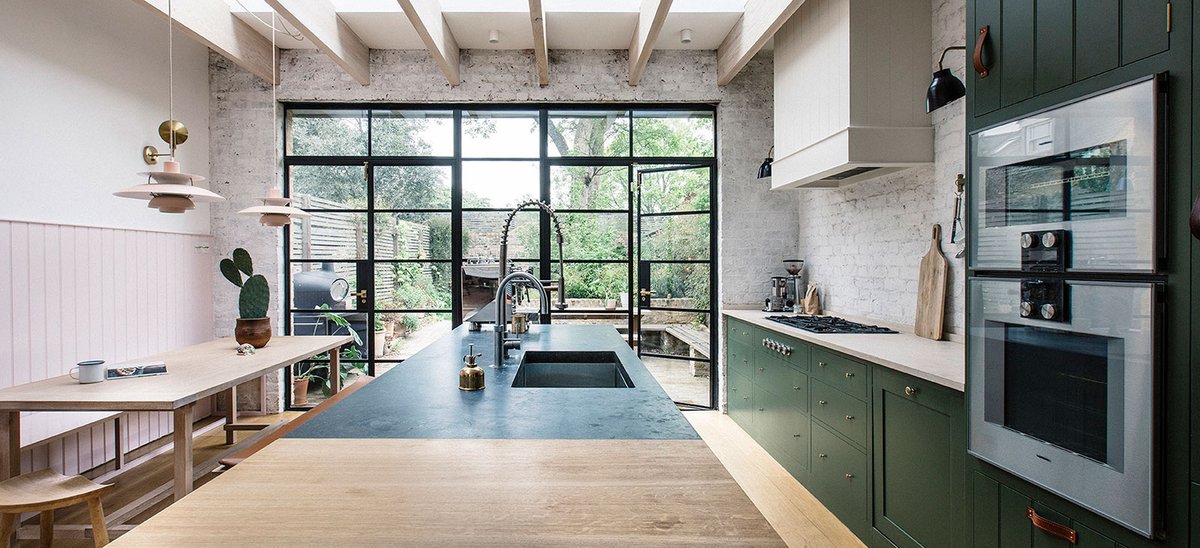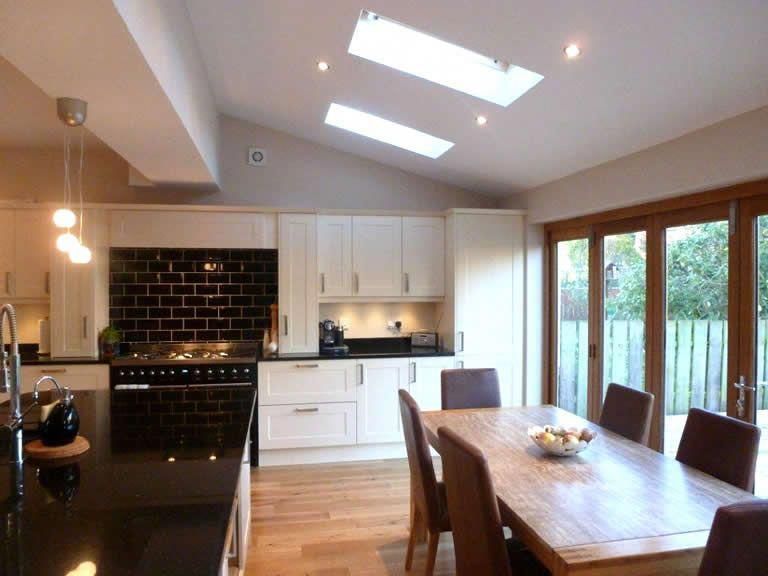Rear kitchen extension ideas: Stunning kitchen extension ideas — get the perfect design
Stunning kitchen extension ideas — get the perfect design
When you purchase through links on our site, we may earn an affiliate commission. Here’s how it works.
(Image credit: Chris Snook)
Our collection of brilliant kitchen extension ideas will give prospective projects food for thought and plenty of design inspiration. No matter what stage your project is at, these ideas of all shapes sizes and budget (including before and after galleries) are both achievable and show-stopping.
One of the most popular reasons for building an extension, creating a bigger kitchen space is a great way to curate a new hub of the family home.
From small side returns on a terrace houses to full-width rear extensions on semi-detached properties, kitchen extensions offer the chance to rearrange a layout which doesn’t quite work for your lifestyle and can give a tired home a new lease of life.
We’ve included before and after pics of real project where possible, alongside project information and a range of expert advice from architects and kitchen designers alike.
Whether you’re working with an architect, designer or doing the planning on a DIY basis, hunt around to find kitchen ideas, designs and styles that inspire you. Analysing how your existing home isn’t fulfilling expectations or requirements is also fantastic starting point to work out a priority list and design brief, as well as focusing your inspiration.
“The first question we ask a client is ‘why are you undertaking this project?'”, explains Helena Myers, director of The Myers Touch Design Studio. “It’ll really get you thinking about what it is you want and will help you and the designer to begin exploring what outcome you hope a new kitchen space will bring.”
Try to consider what the new kitchen space will be used for. Kitchens are rarely used simply to cook in anymore, so considering family seating, a small home office space or a children’s play area will help kick start the layout.
Image 1 of 4
Wanting to maximise space in their dated 1930s house renovation and prioritise it for family living, Ed and Melissa Addington chosen an open-plan layout with defined spaces (Image credit: Chris Snook)Designed by Stylus Architects, the rear extension features different zoning techniques such as changes in flooring, flat rooflights and partitioning walls to divide the large space.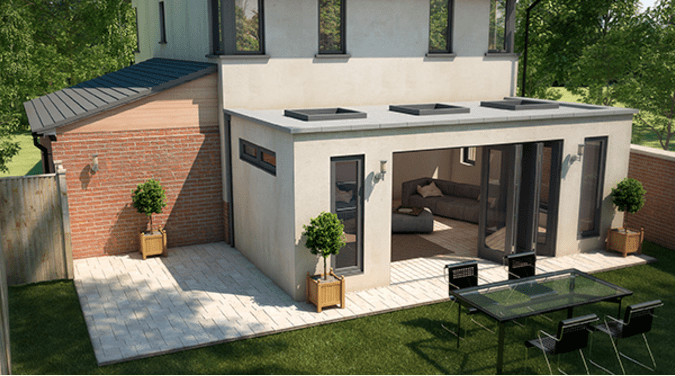
Image 1 of 4
A small side extension was all that was needed to unlock the potential of this classic terrace house. Copious amounts of glazing provide the homeowners with a greater connection to the garden, even in dreary weather. (Image credit: c/o Create Bespoke)The picture window looking out towards the garden is inlayed with Iroko timber. (Image credit: c/o Create Bespoke)BEFORE: While the space is a similar size, the transformation is incredible. (Image credit: Jess Young)A large sliding door is a great way to create a connection with the garden. (Image credit: c/o Create Bespoke)
Kitchen extensions don’t have to be huge, sprawling designs to transform an existing house. “Don’t always assume that the only way to get what you want for your home is the widest, longest extension you can achieve under planning permission or Permitted Development,” advises Laura Jane Clark, director of Lamp Architects.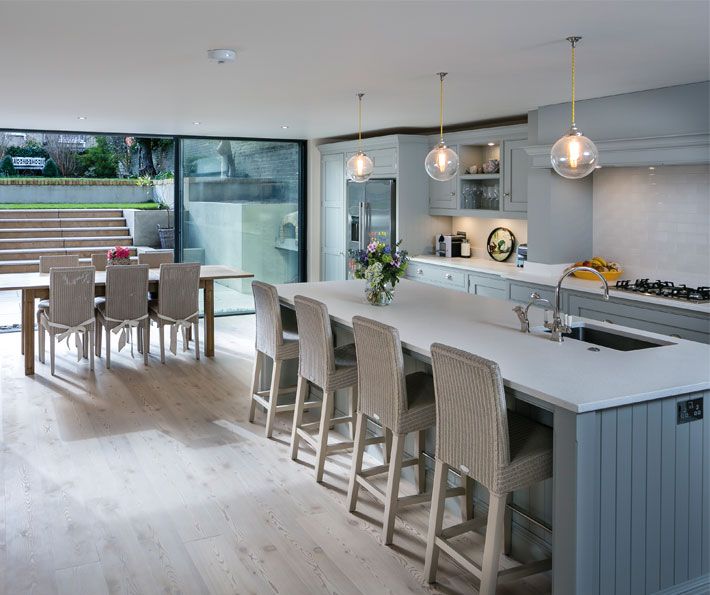
“Often a big square extension can result in a dark cavernous home that will need extensive rooflights, windows and additional lighting. As cost-saving alternative, think about clever ways to use your design that will minimise the need for a huge extension.”
By utilising large glazing and window styles and other small kitchen extension ideas, a greater connection with the garden can be established and the sense of space will be increased.
Bifold or sliding patio doors are fantastic options that offer views out all year round, while installing a large roof lantern can bring in plenty of natural light to the new space.
Be realistic about kitchen extension costs
(Image credit: Jeremy Phillips)
One of the biggest pitfalls of a project is not being realistic about the questions ‘how much does an extension cost?’. Aspiring extenders might be surprise in particular by how much materials and labour shortages have inflated costs in recent years and their budget now seems a bit tighter than it was previously.
On the whole, a kitchen extension will cost around £1,500- £2,250m2. Naturally this will depend on the quality of construction and the level of detailing. For instance, using off-the-shelf sizes for patio doors and a kitchen design from IKEA will massively reduce costs compared with bespoke glazing and made-to-measure units.
That being said, a kitchen extension is an investment and will be used every day by at least one member of the household. Taking time to figure out a decent budget for your inspiration (and how much it might add value to your home), will set you on the right path.
Plan an open plan kitchen, living and dining extension carefully
(Image credit: Juliet Murphy)
Open plan has long dominated kitchen extension layout designs, and for good reason, but be sure to take the time to organise the space from the early planning stages.
For ideas on how to design a combined kitchen, diner and family room – from circulation spaces to buying appliances – take a look at our guide to open plan kitchens.
This 1930s semi was extended by Iguana Architects. The new space is inspired by biophilic design, with a butterfly roof pitch and green roof covering.
Let in the light with an orangery kitchen extension
(Image credit: Vale Garden Houses)
When designing a kitchen extension, spend time and effort on making sure plenty natural light infiltrates the space — but don’t make the rest of the house feel dark! This is a delicate balance, but one that is important to get right.
Find inspiration from kitchen conservatory extensions in how to incorporate rooflight, roof lanterns and patio doors into the new space.
Although beware of the Building Regs rule that states that the area of windows, roof windows and glazed doors mustn’t account for more than 25% of the extension’s floor area.
“The reason for this restriction is simply down to thermal efficiency,” explains chartered surveyor Ian Rock. “If you want large amounts of glazing, one solution is to demonstrate that the overall heat loss of your extension with the increased area of glass will be no worse than if you’d stick to the 25% rule.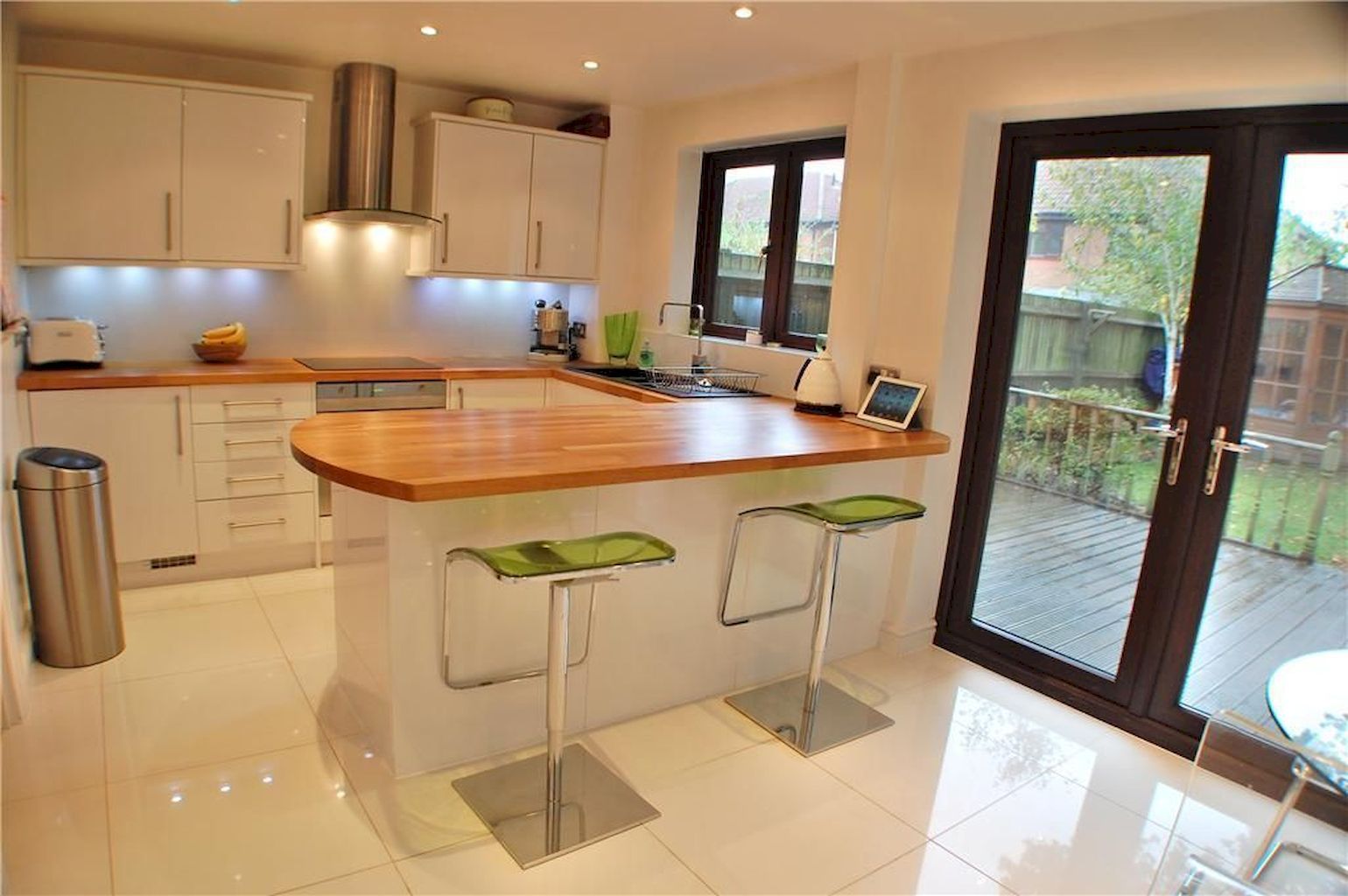
Transform a galley kitchen with an L-shaped wrap-around extension
(Image credit: LochAnna Kitchens)
Open up a dark and pokey galley kitchen with a wrap around extension. Extending out to the rear and side will not only increase a home’s value, but rearranging the existing rooms to suit an open plan lifestyle will also make the layout flow more easily.
The new steel beams of this extension reveal the previous layout of the existing home. Cleverly the galley kitchen has ben opened up with a wrap-around extension that provides a new dining space and seating area.
Look to the back of a semi-detached house
Image 1 of 3
The homeowner of this three-bedroom semi-detached house in Shropshire built a rear kitchen extension to make room for their family. The key to the design was to create flexible spaces that would adapt as the children grew older and priorities changes. (Image credit: Mo Photo c/o KE-Design)BEFORE: The house had a tiny kitchen and an old conservatory that was only usable three months of the year.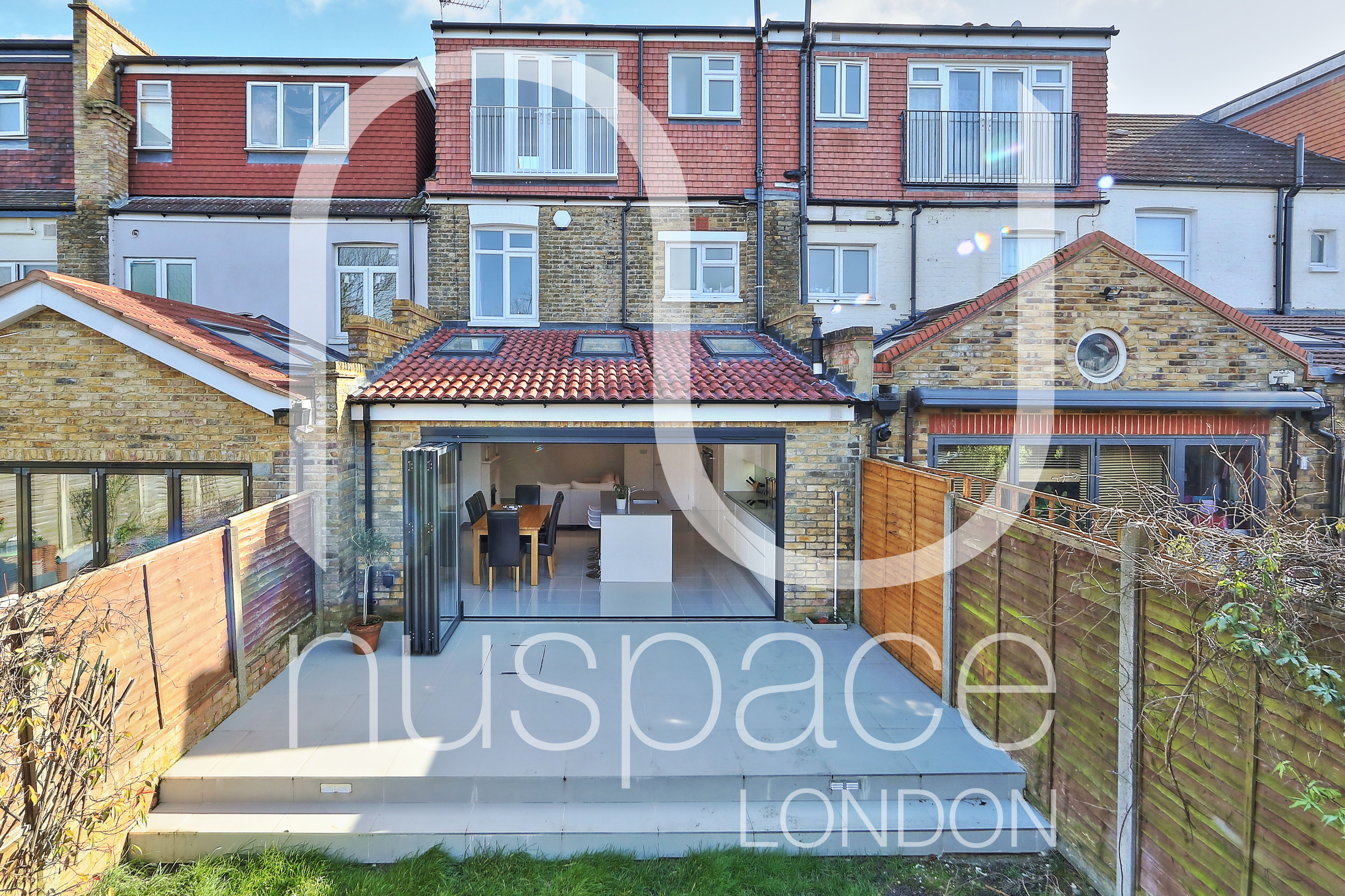
Creating much-needed space with a rear kitchen extension can transform a semi detached home. It’s not often this style of homes is organised to make the most of garden views or to house a large, open-plan cooking area so extending to the back can unlock their potential.
Be sure to consider the roof line when looking at rear extension ideas. A flat roof, like the one above, might allow you to maximise ceiling height without blocking out first floor windows.
Alternatively, create a vaulted ceiling extension with a pitched roof for a truly special addition to an existing house.
Transform a dated bungalow with a kitchen extension
(Image credit: Siobhan Doran)
While bungalow are often derided for being dated and perceived as unsuitable for families, they usually have a large garden plot making them a great proponent for a kitchen extension to reinvigorate the layout.
Play with different scales in ceiling heights and pitches, emphasise an asymmetrical form or create a whole new character through a complete remodel. These properties can act as the perfect blank canvas for your kitchen extension ideas.
Here, the mid-century aesthetics of the bungalow have been encouraged in the kitchen diner ideas, while the vaulted ceiling adds a new sense of drama.
Bring new materials into a kitchen extension
(Image credit: Richard Chivers)
Bring a new material into a kitchen extension using a tile splashback, a quirky worktop or internal timber cladding ideas.
Previously suffering from low ceilings and a lack of natural light, the kitchen and dining space of this terrace has been reconfigured by Yard Architects, thanks to a single storey extension.
Strip rooflights bring light into the new space while oak batten cladding lines the dining space and back wall of the kitchen, concealing the larder cupboard and fridge.
Create a tailored layout for your kitchen extension
(Image credit: Jim Stephenson c/o nimtim Architects)
“The homeowners behind this extension project are Mediterranean and they wanted an outdoor covered are to sit and enjoy the garden,” explains Allie Mckinnon, project runner for nimtim Architects.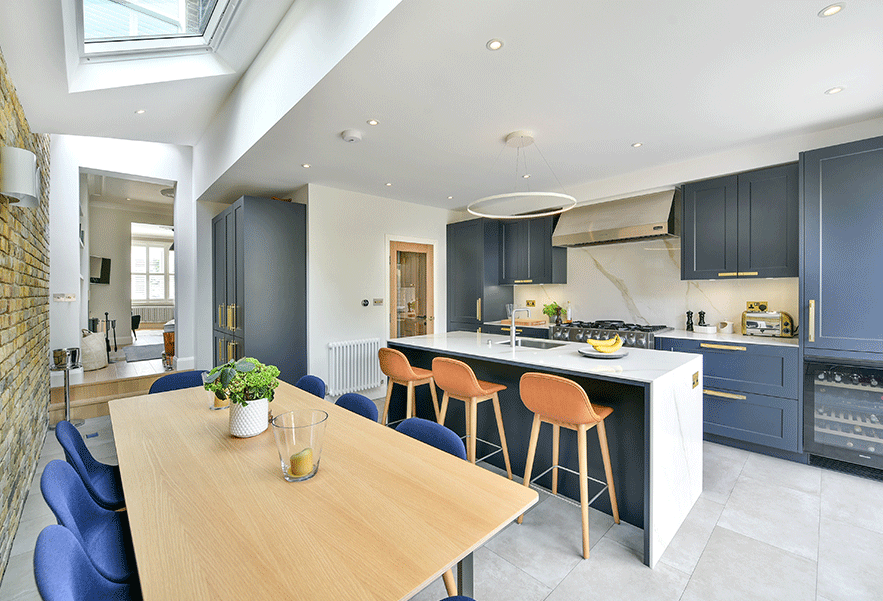
“The house is west facing at the rear and we designed the roof canopy to give shelter as well as reduce solar gain from the largely glazed extension.
“We also added in opening rooflights to bring in additional light and to create air movement and ventilation through the space. For those extending, the aspect of your design is important to consider and we would suggest plotting the proposed scheme in-situ and noting how to sunlight affects this area throughout the day.”
Choose the right roof type for your kitchen extension
Image 1 of 3
(Image credit: David Barbour)(Image credit: David Barbour)(Image credit: David Barbour)
Achieving the right roof type for a kitchen extension is an underestimated but incredible important detail that will affect the overall design, the cost and how to extension interacts with the original building.
Pitched roof extensions offer the chance for vaulted ceilings or additional hidden storage, but be sure to match the angle or the existing house, or at least the styles of the surrounding areas,
Flat roof extensions, on the other hand, can come alive with roof lanterns and other ceiling glazing.
Look to the side to increase space in a kitchen
(Image credit: Richard Downer c/o Van Ellen Sheryn Architects)
Don’t sacrifice valued garden space for your new extension and build to the side of the house instead.
Side extension ideas can come in all shapes and sizes, but when installing a kitchen into the addition, be sure the flow from one end of the house to the other is seamless.
A stone lean-to shed was replaced with a contemporary glass extension designed by van Ellen + Sheryn to extend the kitchen diner. A large glazed extension provides views out to the garden.
Balance kitchen and living areas in an open plan space
(Image credit: David Barbour)
Kitchens are rarely just kitchens these days. There is often a dual functionality in modern kitchen ideas, be it for dining, watching tv, reading or home working.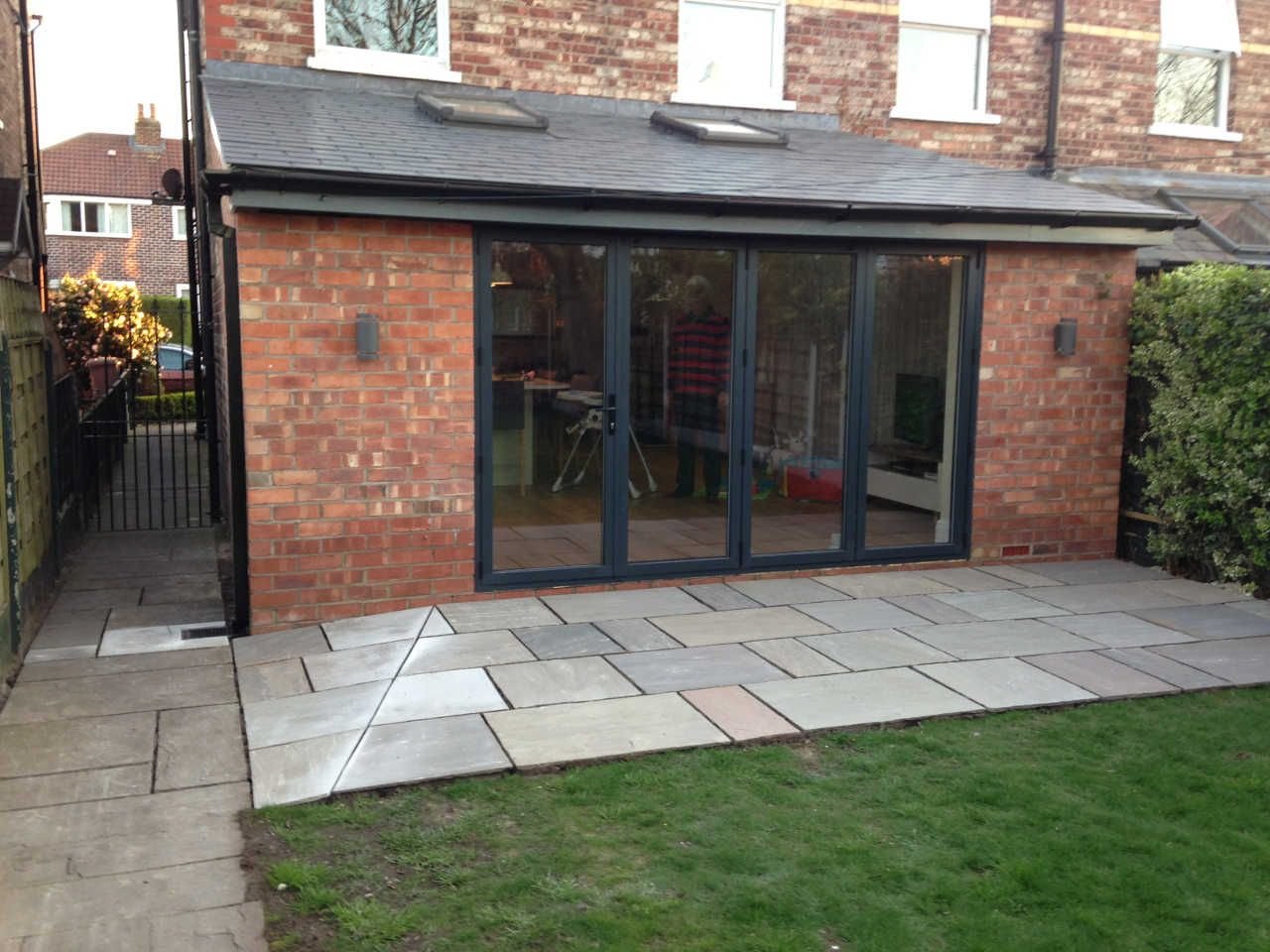
Think about how these spaces will interact with each other and, importantly, how you can encourage flow through the room. Map out how you will travel from the kitchen area to the sofa, or the dining area, through the back door and into the garden.
From this, aim to balance furniture placement with through-routes to save an awkward layout that is cumbersome to navigate.
Pay attention to details when opening to the garden
(Image credit: Origin)
When installing bifold or sliding patio doors in a new extension, the devil is in the detail. The difference by high and low quality materials will be noticeable after years of use — make sure your choice is the right one.
“A priority in this project was the threshold. The homeowners wanted to minimise the step from the inside to outside environments, while ensuring it remained watertight,” explains Victoria Brocklesby, COO at Origin.
“After getting in touch with Origin, they were put into contact with their local partner whose installer sunk the threshold into the floor which left a minimal step of just 14mm.
Combine old and new in a small cottage extension
(Image credit: Simon Burt)
A lovely way to introduce a new extension into an older property is to let both influences really shine in their own right. Let interesting oak beams or stone walls contrast with large swathes of glazing and contemporary textures in your new addition.
This will give personality and a sense of uniqueness to kitchens in cottage extensions— a social space usually classed as the hub of the home. If you don’t celebrate a home’s identity there, where else is better to do it?
This granite stone cottage was beautifully extended using a small conservatory. The original inglenook stands proud (left of shot) against the new cast concrete island.
Establish your favourite kitchen layouts — from islands to galleys
(Image credit: Dave Burton)
When starting from scratch in a kitchen extension it can be difficult to create a new layout with a blank canvas. We’re so used to making do with awkward or idiosyncratic spaces in our homes that when faces with a blank box to do with what we like we get overwhelmed.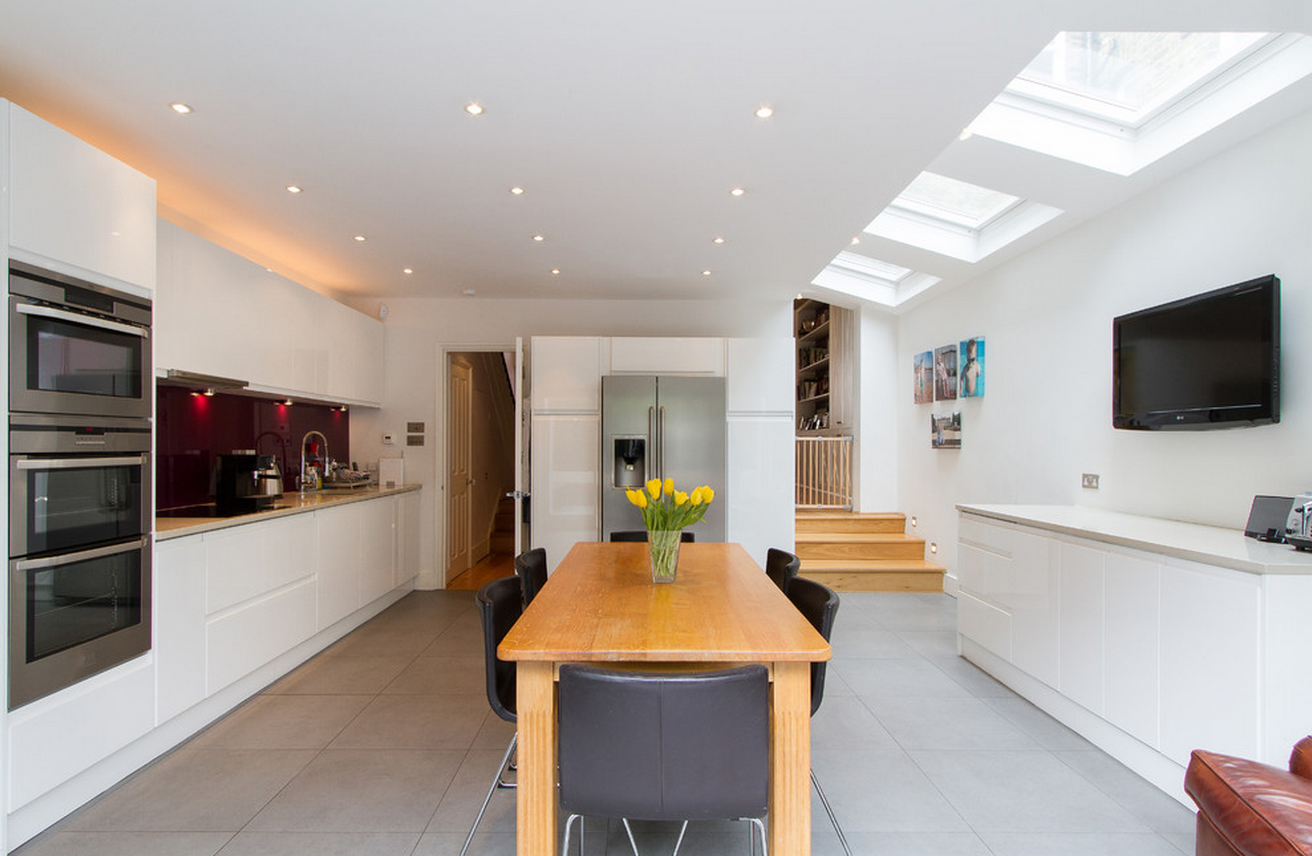
Research the different types of kitchen layout ideas and try to remember times when you have interacted with each of them. Perhaps your childhood home has a large central island where the family gathered and you’d like to recreate it. Or, is there a galley kitchen in a friend’s house that you love and would like to emulate the convenience? Likewise, do you hate single line kitchens of holiday lets and know for sure that’;s not for you?
Use these real-life examples to inform size, shape and proportions.
Create drama in a new kitchen extension
(Image credit: Future)
Going up two stories, rather than just the one gives opportunity for a sense of architectural drama and the ability to create and connect other spaces.
Double storey extensions won’t cost much more per square metre than single storey and can (in some cases) still fall under permitted development.
In this extension to an old storage barn, the homeowners used their two storey extension to create a reading nook above their living space on the mezzanine while a bridge landing leads to the bedrooms.
Give lighting it’s time to shine
(Image credit: Armac Martin)
The joy of a kitchen extension is that you get to plan and tailor every specific element of your new space. And this should definitely include the lighting scheme.
While a grid of downlights is cheap and somewhat easy to fall back on, this will not fulfil all of the lighting requirements for a kitchen. Play with kitchen lighting ideas like wall lights near open shelving, pendant lights over an island, LED strips under cupboards and so on.
The effect of a good lighting scheme in a new kitchen is undeniable. Make sure yours uses the best kitchen lighting you can afford — it will make all the difference.
Choose a flooring create a cohesive space
(Image credit: Gabriell James Chairmakers)
You might choose to completely separate the new kitchen extension from the rest of the house, but one stylish trick is to install the same kitchen flooring ideas in the spaces leading to the new extension.
Subtly linking together the two spaces will create a more cohesive overall home, without making the old rooms feel tired or underloved.
That being said, kitchens require a certain hardiness in their flooring, so try to choose something that will work for high traffic areas, such as solid or engineered wood, as well as those near water spillages, like LVT or porcelain tile.
Keep sustainability in mind when adding a new kitchen
(Image credit: Used Kitchen Exchange)
While a brand new kitchen bespoke to the space and your lifestyle is extremely tempting during a project, considering a second hand kitchen is an amazing way to cut-costs or get a higher-quality finish for less.
This beautiful walnut kitchen in an orangery-inspired extension was originally priced at £60,000 and designed for another family home. The new owner bought it from the Used Kitchen Exchange for just £9,000 complete with Miele appliances.
Use cladding to make a kitchen extension stand out
Image 1 of 3
(Image credit: Simon Maxwell)The open-plan space features a kitchen from DeVOL and a family sitting area.
A new extension is not just an opportunity to transform interior spaces, but also to give the exterior of a tired or dated home a refresh and regeneration.
Opting for interesting house cladding choices can take an extension from being a square box to a stunning new space with wow-factor.
This terrace kitchen extension used corten steel to complement the shades within the original Victorian brickwork.
Use a side return to create a new terrace kitchen extension
Image 1 of 2
Indoor-ourdoor tiles have been laid over underfloor heating in this terrace extension before leading out to the garden patio for a seamless transition. (Image credit: David Barbour)While the side-return extension only added 13m2, the ground floor had been opened up to create a sociable kitchen, dining and living space.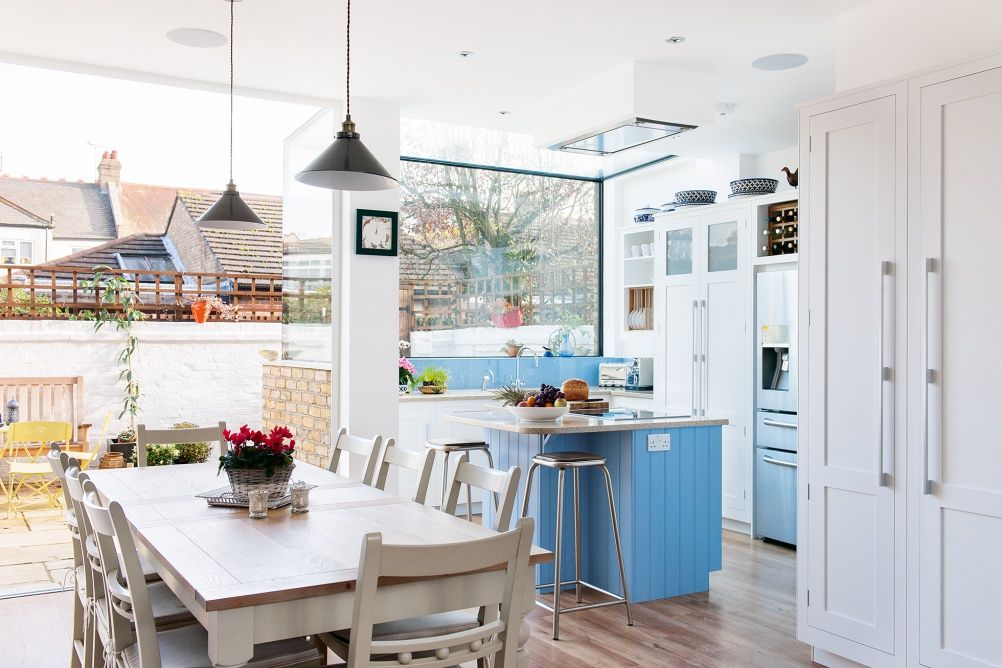
Utilising the wasted space to the side of a terrace house is one of the most popular extension designs. Essentially doubling the size of the kitchen space, often a dining or sitting area is created.
This home’s glass extension to the side of the previous galley kitchen has opened up the space to suit a dining area with roof lights above.
How Can I Extend my Kitchen Area?
“The input of an experienced designer will really help stitch the old with the new,” says Deputy Editor Michelle Guy. “They will ideally consider how the new space flows and connected with the existing house, whether to opt for a contemporary extension or something that blends with the existing house, and the size and scale of the extension — often referred to as ‘massing’.
Your extension will need to comply with the Building Regulations and inspected at different stage of the build.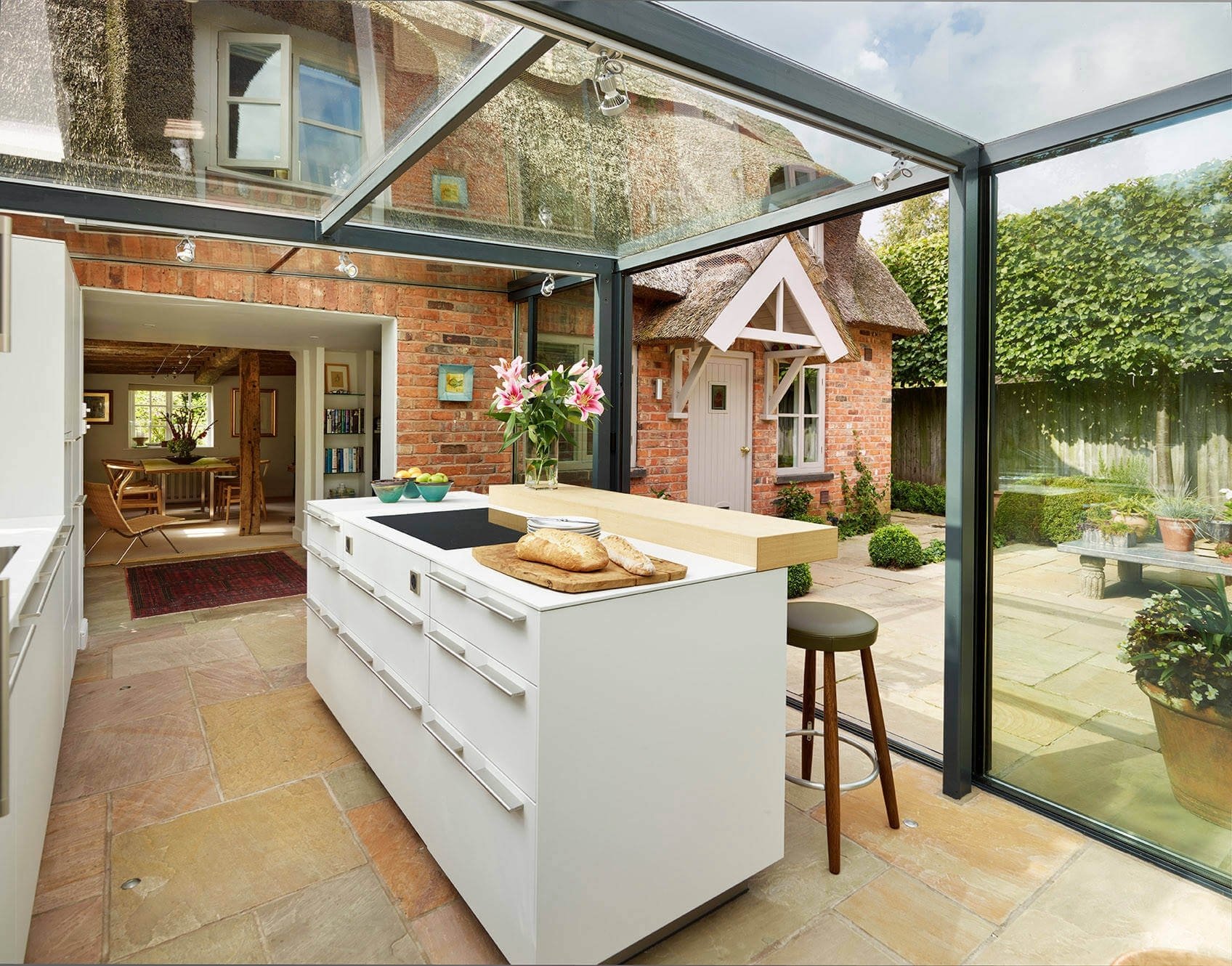
Image 1 of 2
Although simple, this new extension to a semi-detached home creates the perfect spot for the young family to catch up after a long day — including a small seating area and a long table to gather round during meal times. (Image credit: Simon Maxwell)The homeowners designed the kitchen to be a great space to entertain, right down to an extra sink which can be filled with ice to chill wine. They also fitted LVT flooring to withstand the high traffic of the new family and kitchen space. (Image credit: Simon Maxwell)
Do I Need Planning Permission for a Kitchen Extension?
If a single-storey extension plan is less than 8m in depth from the rear of the existing house, you do not need planning permission for a kitchen extension, as this would fall under Permitted Development (PD) rights.
“These PD rights are set out fairly clearly in government guidance on the planning system — detailed rules are found within ‘Permitted Development rights for householders: technical guidance’ which is available on www.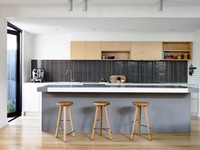
“Understanding PD rights can be really helpful if you make a planning application for something that is just a little larger than PD allows,” he continues. “This is because the council is duty-bound to compare what you want with what you can do anyway.
“If PD would allow you a certain size of extension and what you want to build is a few metres higher or longer, remember that the council can only actually assess the impact of those additional elements. The fall back is your PD, and they cannot prevent that, so it’s only the additional amount that they can legitimately object to.”
Bring your dream home to life with expert advice, how-to guides and design inspiration, direct to your inbox.
Contact me with news and offers from other Future brandsReceive email from us on behalf of our trusted partners or sponsors
Assistant Editor Amy began working for Homebuilding & Renovating in 2018. She has an interest in sustainable building methods and always has her eye on the latest design ideas.
Get the Homebuilding & Renovating Newsletter
Bring your dream home to life with expert advice, how-to guides and design inspiration, direct to your inbox.
Thank you for signing up to Homebuilding. You will receive a verification email shortly.
There was a problem. Please refresh the page and try again.
By submitting your information you agree to the Terms & Conditions and Privacy Policy and are aged 16 or over.
Kitchen Extension Ideas: 20 Inspiring Designs
Share article:
Login/register to save Article for later
Design It
Kitchen extensions can turn a small, cramped cooking zone into a bright, open-plan and multi-functional space to be enjoyed by family and friends.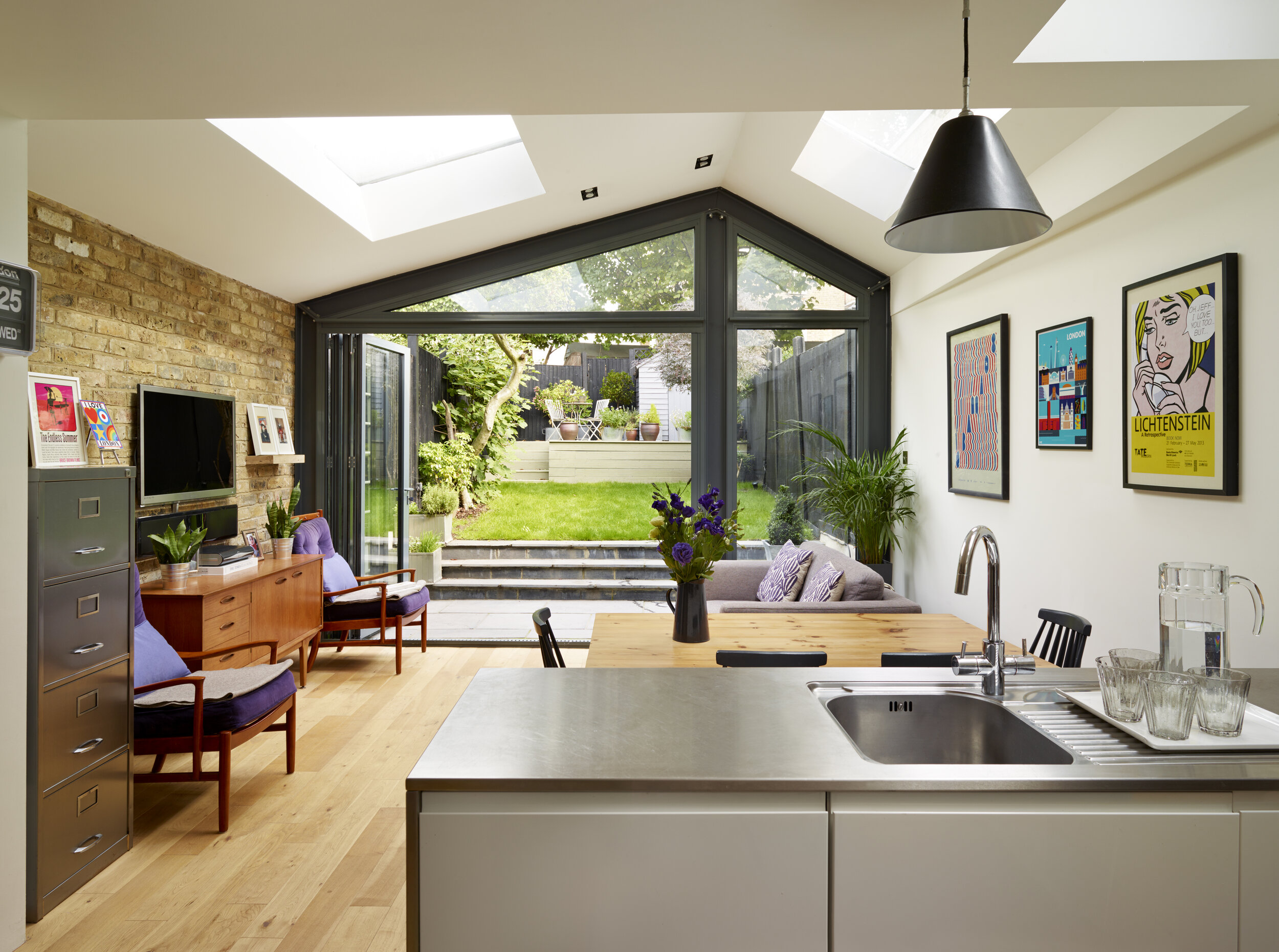
by Sander Tel
22nd June 2023
Are you looking for kitchen extension ideas? A kitchen extension is the sought-after home addition for those wanting a social, light-filled and open cooking-entertaining hub. This space is quite often the heart of the home, and especially for those with small kitchens, extending may be the best route to tapping into the potential this zone has to offer.
But where should you begin with gathering your kitchen extension ideas or planning your brand-new addition? Firstly, it’s important to be in the know with planning permission and your local area’s restrictions on development. For the most part, kitchen extensions – that are single-storey and at the rear of a property – will fall under permitted development. Before collating your kitchen extension ideas, though, use our guide to extending a home under permitted development to see what you can likely achieve with your space and budget.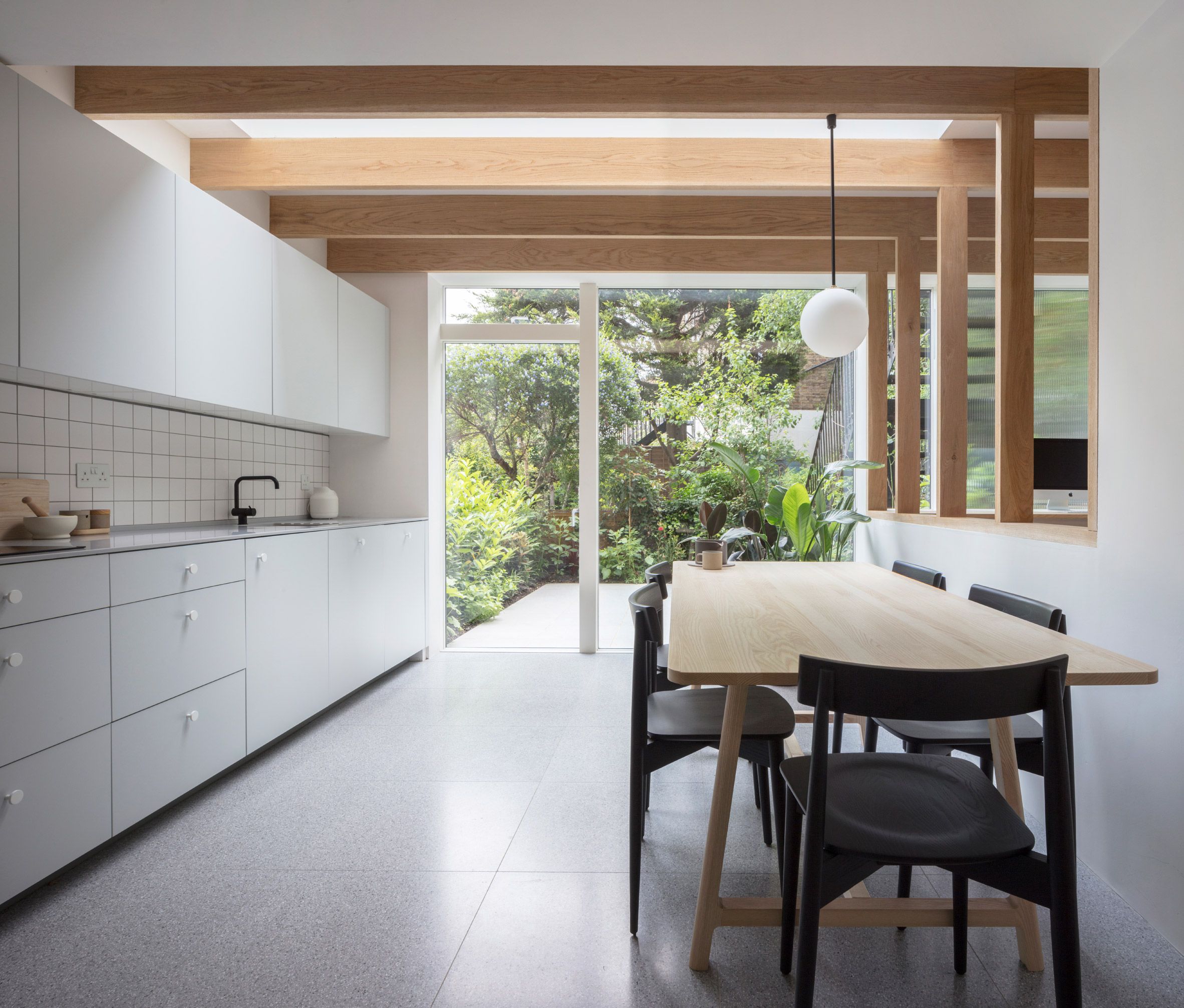
It’ll also be crucial to identify how exactly you’ll want to use the new zone – note why you want the extra space and what for, then you can begin to curate a list of features that are essential. Perhaps a stand-out kitchen island, sliding or bifold glazed doors, or maybe a cosy snug zone?
The most popular form of kitchen extension is the side return addition, which involves building into the often-unused side and rear area of a property (these are commonly found in terraced homes). This comes with a generous opportunity for features such as lean-to glazed roofs which will help contribute to the bright and airy feeling most are after.
Though, your options are fairly open when it comes to developing successful kitchen extension. To help you see what potential is laying in store, we’ve gathered a collection of amazing kitchen extension ideas for you to use as a trusty design guide.
1. Contemporary Flat Roof Kitchen Extension
This kitchen extension by CDC Studio is a generously-sized flat roof addition that accommodates a new multi-functional family space.
Photo: Richard Chivers
Complete with dramatic Douglas fir ceiling joists, a striking rooflight from Glazing Vision and sliding doors that provide unimpeded views to the garden, this contemporary kitchen extension elevates the Victorian home significantly. A Rockwool solution was used to insulate the Bauder single ply roof, too, which provides U-values of 0.15 W/m2K.
Read More: Flat Roof Extensions: Here’s What You Need to Know
2. Small Kitchen Extension in Urban Area
The owners of this Putney home replaced a tired lean-to conservatory with a single storey, flat roof extension that wraps around the side return.
The design brief called for as much natural light as possible all year round, so the couple specified IDSystems’ theEDGE2.
To enhance this, the doors were installed on an extended track to open into a pocket wall. This has helped to increase the amount of available floorspace for cabinets and the island unit. “Pocket sliding doors have become hugely popular because they overcome the only real drawback of these systems – namely the requirement to have a fixed frame for the panels to slide behind,” explains Edward Stobart, IDSystems’ sales manager.
3. Side Return Kitchen Extension
When drawing up your kitchen extension ideas, it’s important to make note of where you can maximise light. Architects Holland Green transformed this once-redundant side return into a luxurious kitchen space with an exciting glazed roof from IQ Glass.
Photo: Claire Williams
The glazed kitchen extension’s feature roof extends beyond 7m in length, allowing constant daylight to enter the space to create an open-feeling family zone that’s never dull or dark.
The project also makes use of three track glazed doors, also from IQ Glass, with slim sightlines of 21mm. These boast an unbroken threshold to create an awe-inspiring seamless transition between the house and garden.
More Inspiration: Side Return Extensions: Project Inspiration and Expert Advice
4. Wow-Factor Glazed Addition
This home has been upgraded with a structurally-impressive glazed kitchen extension, designed by Scenario Architecture. The addition replaces a once-tired conservatory and makes use of steel beams that span the width of the house in a unique alignment.
Each beam and column is finished with compact insulation to avoid thermal bridging whilst keeping a slender profile.
Photo: Matt Clayton
This rear extension has been meticulously designed to have a minimal impact on the original architectural character and appearance of the original property’s fabric, yet draws daylight right through the length of the ground floor.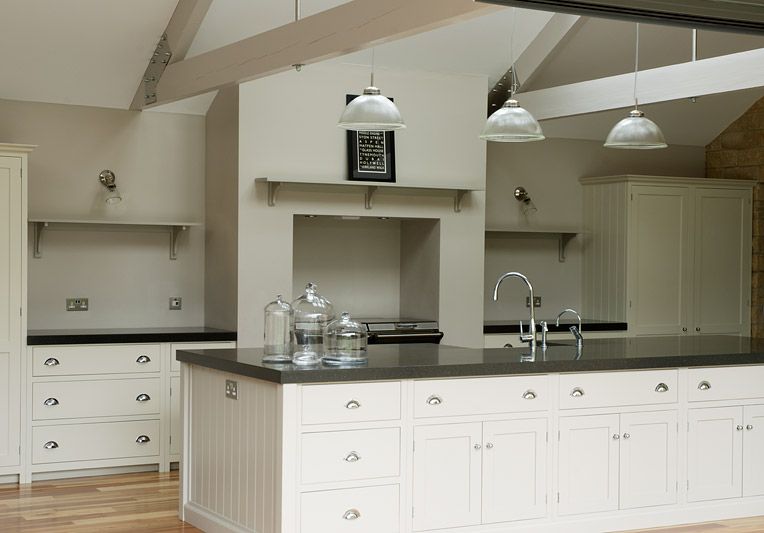
5. Multi-Functional Family Addition
This large kitchen-dining-living extension by Plus Rooms combines elements of the existing structure with a staggered back wall to subtly distinguish different zones.
A sleek sliding door, measuring 2.75m x 2.7m, and two folding doors at 4.6m x 2.7m and 2.1m x 2.7m (all in powder coated aluminium) were installed to provide multiple access points and capture the garden views. Frameless solar reflective skylights were installed in the flat roof structure.
Expert View: 5 Top Tips for Designing a Wow-Factor Kitchen ExtensionJames Bernard, Director of Plus Rooms, shares his top pieces of advice on how to create a show-stopping kitchen extension
|
6. Glass Box Kitchen-Diner Extension
Looking for kitchen extension ideas for a traditional home? AR Design Studio created this ultra-modern glass rear extension, which delivers a bright new kitchen-dining-living hub to this period home. The contemporary zone opens up to the garden and sky through a collection of frameless glazed walls, doors and roofing.
The bright communal spaces of the kitchen extension contrast with the period home without disturbing its original character.
Looking for period home extension ideas? Take a look at these Period Home Extensions: Design Ideas for Combining Old and New
7.
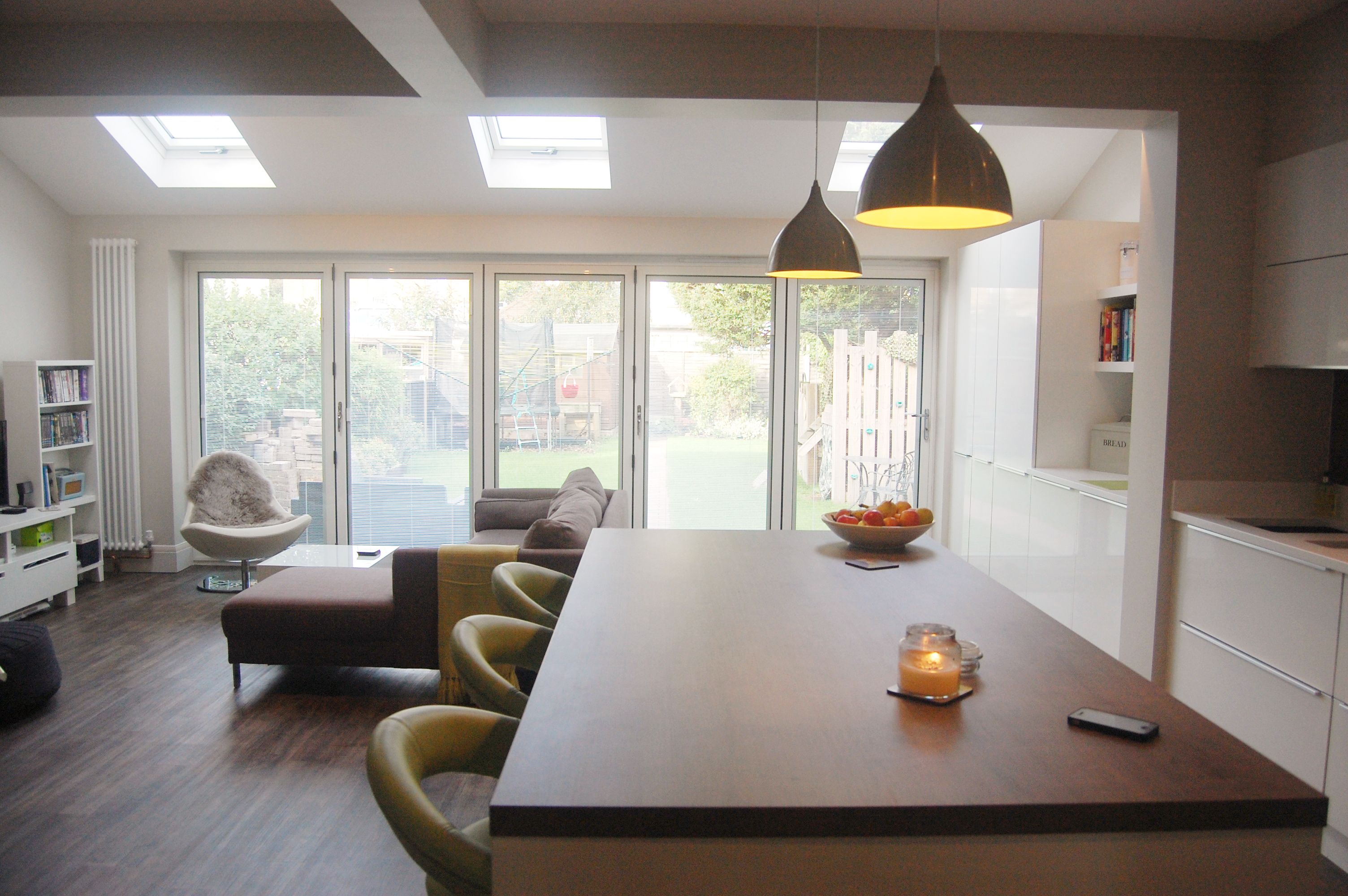
This dilapidated Victorian house has been welcomed into the twenty-first century with a new kitchen extension and complete home refurbishment, masterminded by Oliver Leech Architects.
The home, which acts as a city pad for the Gloucestershire-based family, features a brand-new light and airy extension that’s been built into the homes unused side return. This holds a window seat, contemporary kitchen setup and comfy snug zone.
A neutral scheme characterises the new kitchen extension. It features exposed Dougals fir timber fins that find their structural properties turned into a design feature, alongside plaster walls, brushed copper worktops and concrete flooring that harmonise perfectly.
8. Traditional Home Upgraded with Open-Plan Addition
Located in a conservation area near Peterborough, this home has been upgraded with an expansive yet sensitive addition. Studio McW was briefed to modernise the period dwelling through adding a multi-functional space that would allow the owners to enjoy all corners of the home’s plot.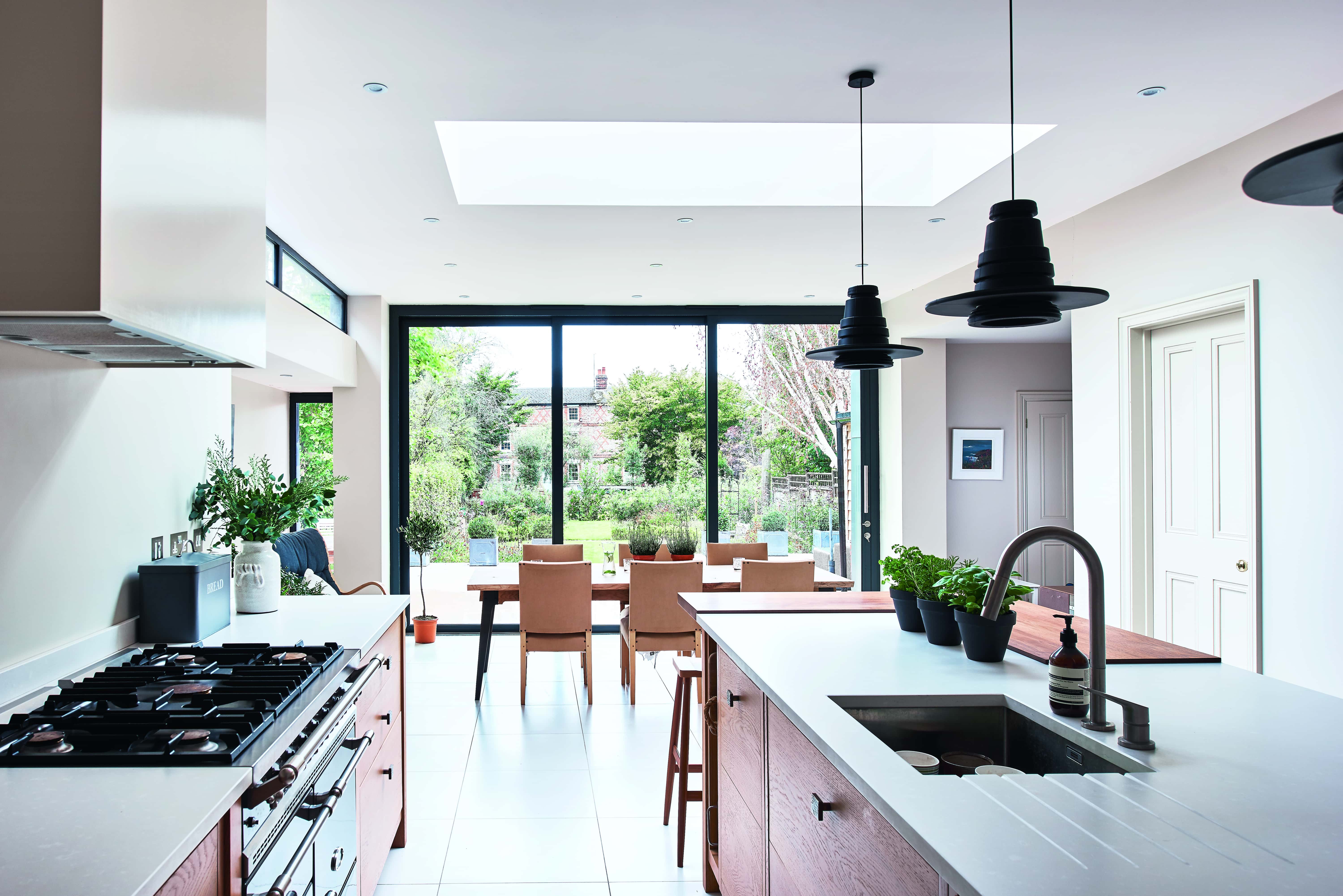
Photo: Lorenzo Zandri
They drew on a kitchen extension idea that would feature an open-plan, L-shaped kitchen that doubles as a space for dining, living and socialising. A large concrete kitchen island takes centre stage, which is paired with sleek kitchen cabinets and an oak parquet flooring. Lofty vaulted ceilings comprised of painted exposed rafters lend the modern addition a barn-like charm, which helps the structure to blend nicely with the original build.
More Inspiration: Open Plan Living Ideas – Kitchen, Living & Dining Rooms
9. Light-Filled Kitchen Makeover
In this transformation of the rear of a Hertfordshire property by Atelier Architecture + Design, a new light and airy open-plan space has been created.
The single storey rear and side extension includes full length sliding glass doors, allowing there to be seamless connectivity with the outside and plenty of natural light to flood into the home. Modern fittings by Kitchen Matters and a neutral colour palette of warm greys and browns complete the scheme.
10. Kitchen Extension with an Industrial Edge
In this beautiful split level family home, the team at TAS Architects came up with a collection of kitchen extension ideas that would redefine the ground floor to create areas for relaxing, eating and entertaining, while retaining a feeling of unity. The project’s final design palette utilises varied textures. Steel frame doors join the inside and external zones.
11. Listed Home with a Wow Factor New Addition
Think about how you’re going to add wow factor to your home when collating your kitchen extension ideas. This grade II listed property was formed of an amalgam of three parts constructed in different eras: the initial 15th century oak frame house, a Georgian facade and two Victorian wings to either side of the original structure. Ashton Porter Architects worked to complement this clear historical sequence with a fourth element that is unashamedly contemporary.
Slender steel framing, aluminium cladding, glazed white bricks and structural glass make up the addition, which is rotated away from the residence to frame the views into the valleys and Souths Downs.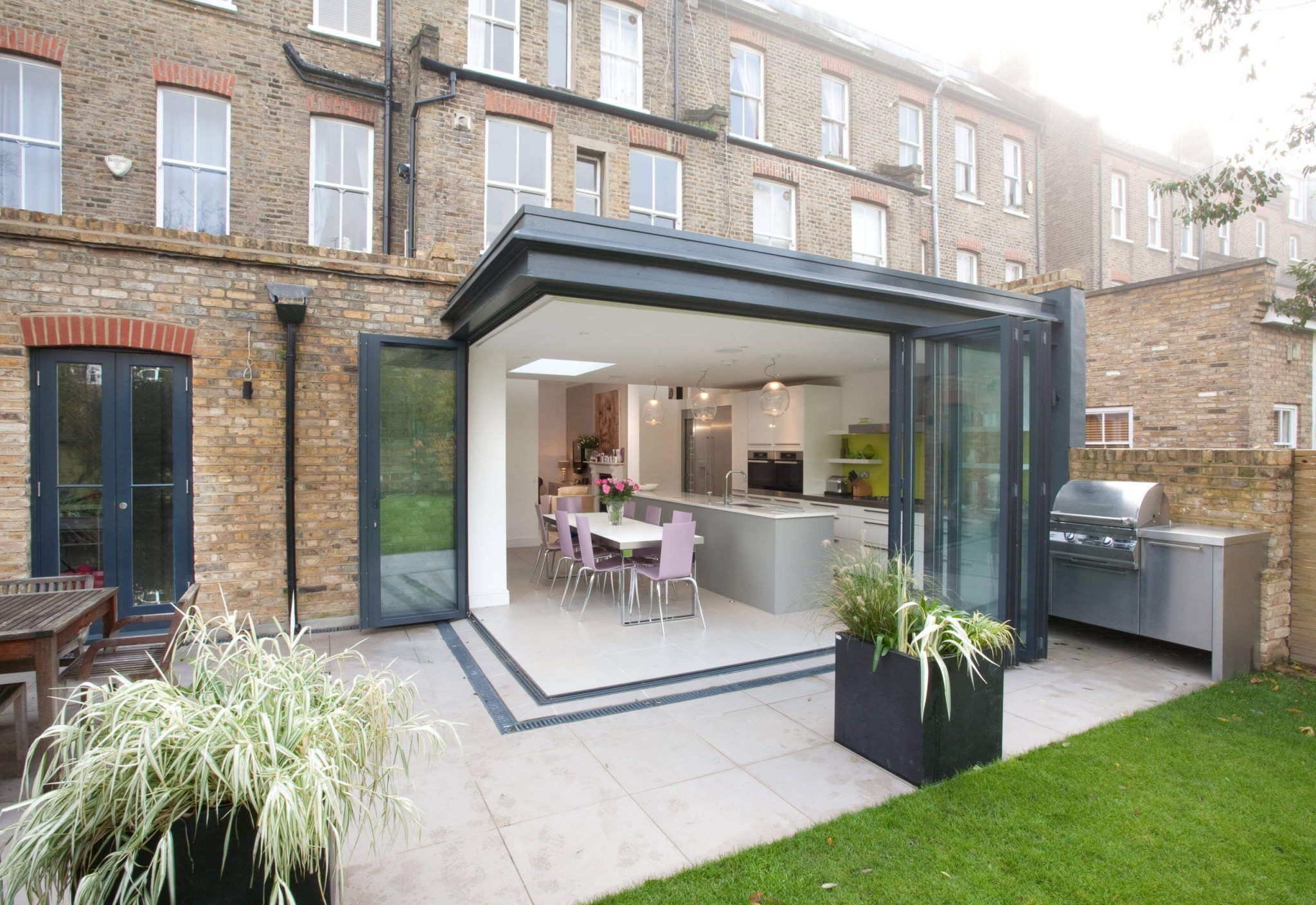
See More: 12 Characterful Listed Home Extensions
12. Multi-Storey Kitchen-Diner Development
This house had been extensively modified in the 1980s. Studio Octopi was brought on board to design an extension, while recapturing and preserving the original proportions of the Georgian terrace building.
A 10m high glass infill addition forms a double height living room at the lowest level and a master ensuite on the upper level. An open tread stair allows views out while moving between levels. The new sections were clad in bricks that match the existing ones, improving visual connectivity with the main property.
13. A Striking Statement
This newly-formed dining space has a modest footprint of 10m2, but combined with a loft extension above creates a distinctive look. Filled with innovative ideas from architects Alma-nac, it transforms the rest of the house, too, allowing for layouts to be reconfigured and encouraging an abundance of light to flood in.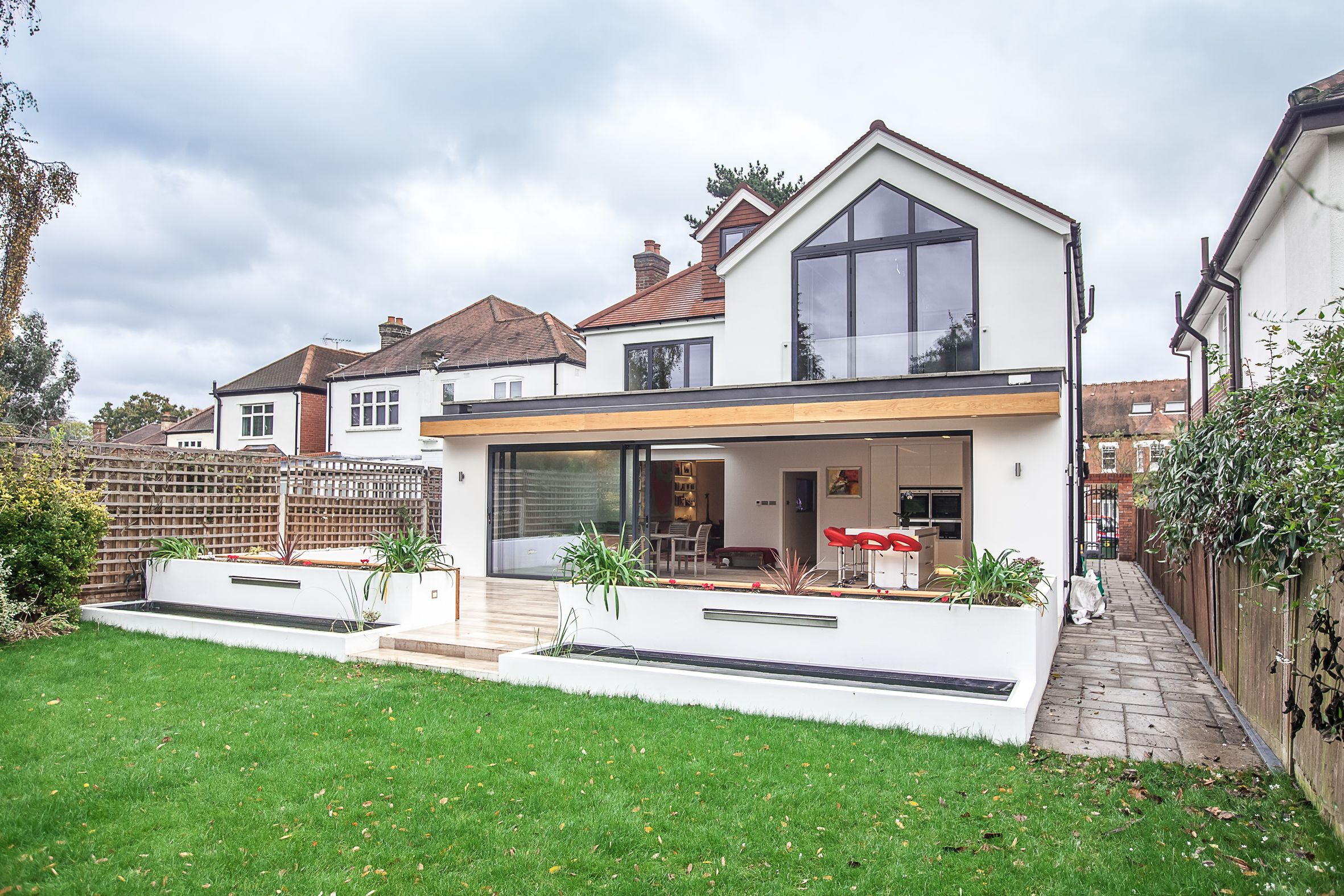
A 3m high glazed pivot door, protruding up from the sloping roof, creates a theatrical link with the rear garden, adding a sense of grandeur to the small yet practical London abode.
14. Kitchen Extension with Expansive Glazing
The owners of this London home wanted to create a large open-plan culinary space that was more sociable and took better advantage of the west-facing sun. Whiteman Architects came up with this kitchen extension idea, bringing light and space to the home.
The ceiling was used as a way of zoning the new room – a small section of overhead vaulting along the length of the addition creates an area for a kitchen-diner, which then wraps round into a larger vaulted ceiling for the living room. A full-width roof window enhances the sense of height and space while retaining the identity of the existing period property.
Read More: Window Design: Choosing the Right Glazing for Your Project
15. Sleek & Elegant Overhaul
This grade II listed building, once plagued by heavy window frames, poor thermal performance, limited views and a leaking skylight, has been upgraded with an elegant, virtually-frameless glazed composition by Space Group Architects.
Inside the kitchen extension, a large stainless steel storage wall enables light to bounce back into the space. On the opposite side, a backlit etched glass wall conceals a larder under the stairs. To finish the look, bespoke oak joinery has been carefully inserted and wrapped around the newly created zones, softening the new addition’s overall feel.
16. 1950s Home Remodelled & Extended
This late 1950s four bedroom semi has gained a large single storey full width rear kitchen extension along with a garage conversion. The contemporary style addition by Model Projects incorporates a new open-plan kitchen dining and family area leading out onto the rear terrace.
The addition features a flat roof with rooflights and full height glazing that maximises the views outside.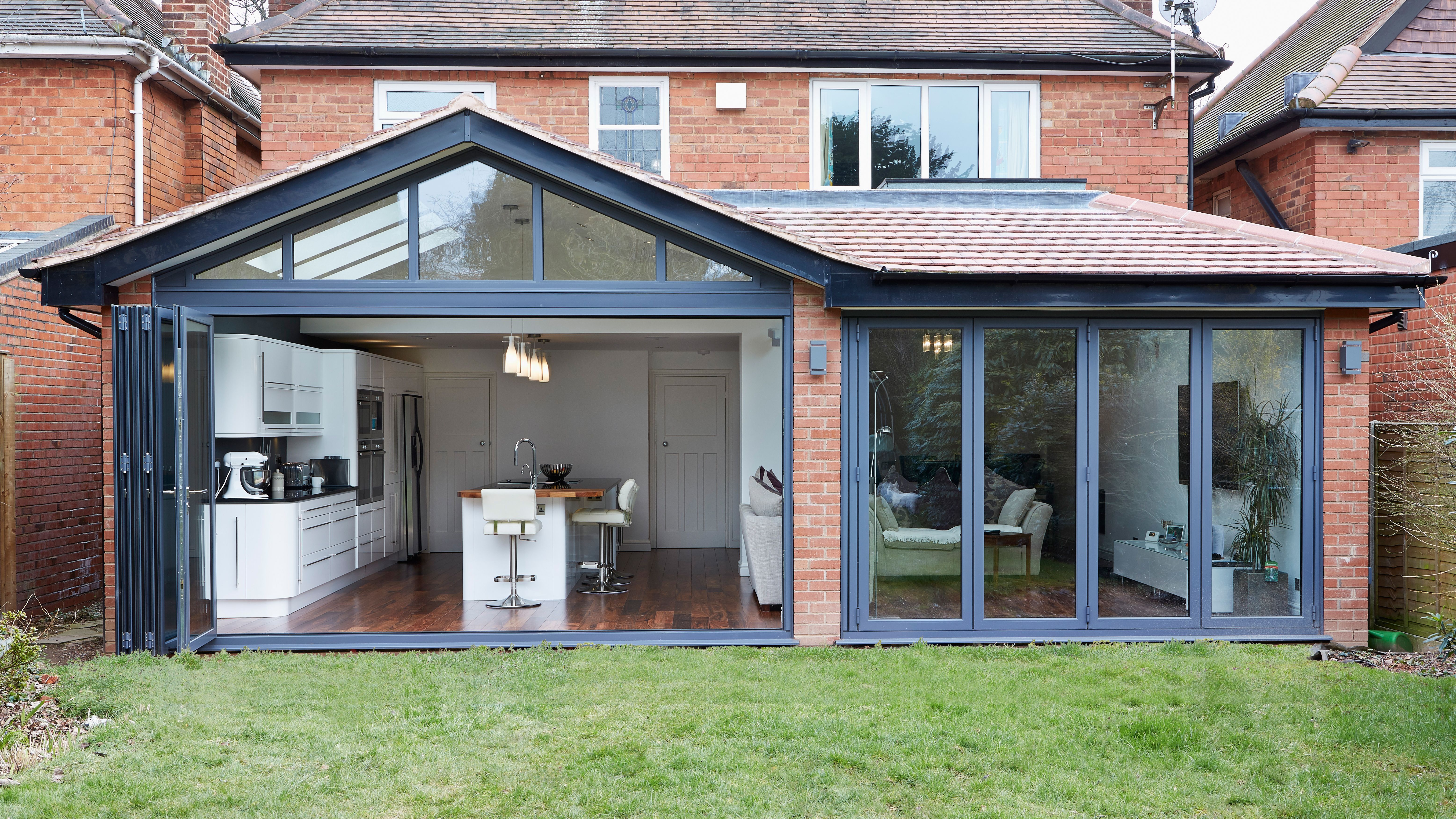
17. Minimalist Kitchen Extension Design
Previously, the rear garden of this Victorian terraced house was only accessible through a small doorway off a utility room. IBLA Architects removed the rear walls, existing bedrooms and staircase and relocated the kitchen downstairs from the upper level, adding a new plywood kitchen island.
The glazed infill side extension brings light into the middle of the floor plan and a new stair hides ample storage in the form of pull-out larder units, leading up to a family bathroom in place of the old culinary space.
18. Seamless Rear Extension
Feneley Studio completed this extensive renovation to a five bedroom home – extending it both horizontally and vertically. The remodelled staircase area is flooded with light and leads onto new bedrooms housed within the roof extension.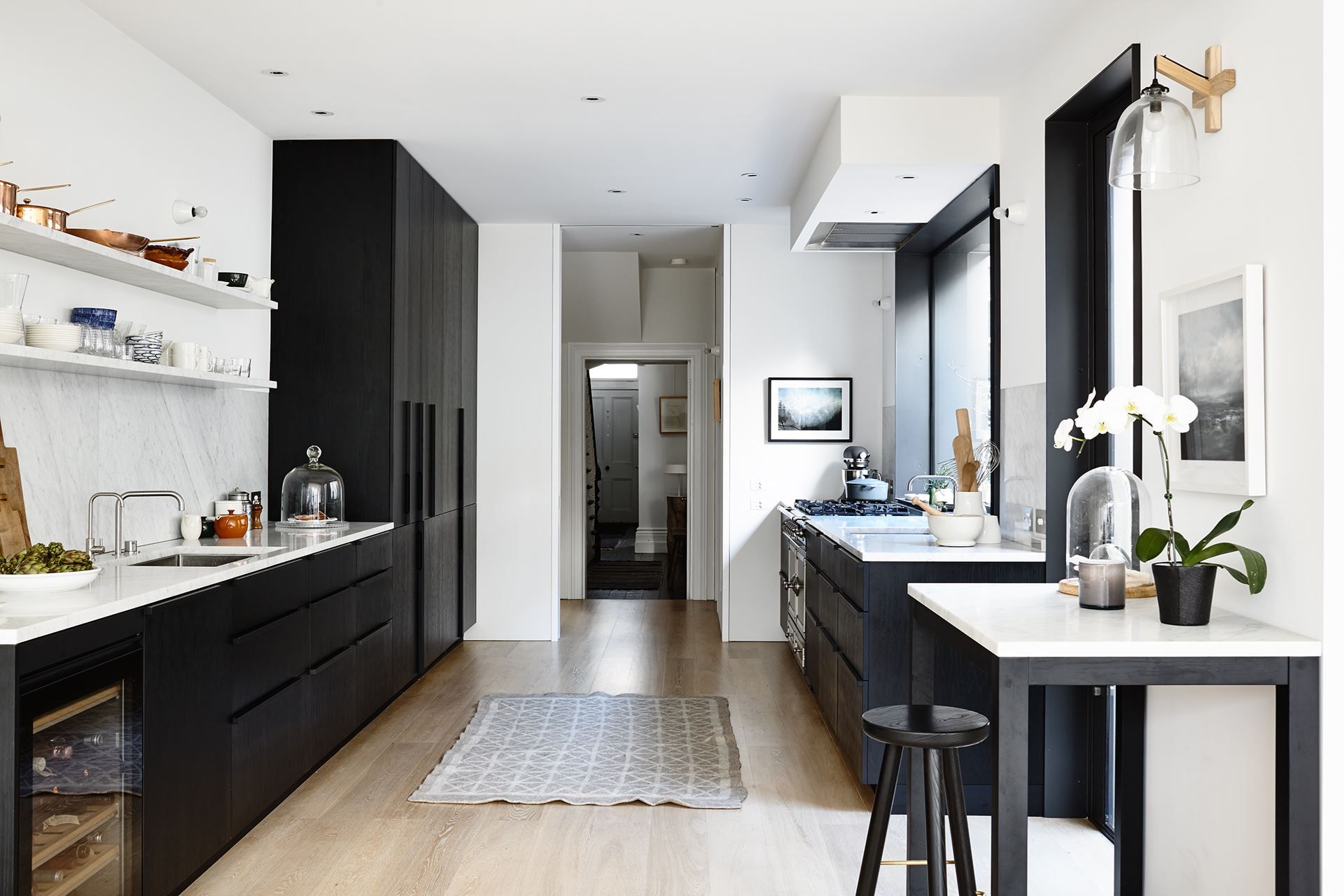
On the ground floor, the rear kitchen extension idea was designed to provide the family with a large social, cooking and dining area, with utility spaces hidden to the side. A polished concrete floor ensures a good flow between the different zones, and bespoke rooflights capture the morning and evening sun.
19. SIPs Kitchen Extension
When Caroline and Gustavo Ordonez-Sanz bought this Victorian property, there was an existing two-storey extension to the rear but this required modernising. It featured an arched window opening, which proved to be important to the design of the overall property and was used to get light into the hallway.
The couple wanted to restore this original feature, so they planned to demolish the existing structure and build a new single-storey kitchen extension, incorporating their desired design features.
Photo: David Barbour
The single-storey extension has been constructed with structural insulated panels (SIPs), which ensures a speedy build and energy efficient space, and has been fit with complementing high performance windows and doors.
Amongst the statement roof glazing is a sedum roof, which has ecological benefits in terms of water attenuation and increased biodiversity.
20. Georgian Home Uplifted with Kitchen Extension
David Blaikie Architects was challenged to create a new cooking/eating area that formed a link between the basement storey and the small east facing garden of this traditional Georgian home.
The team controlled the transition from historic building through to the outside space by retaining one of the original outhouses and creating a new addition, with a sequential internal arrangement so that the use of the building changes as you move through towards the garden.
Photography
/
Published
22nd June 2023
35 photo ideas for beautiful kitchen design
Design selection process
a large kitchen in a private house is fundamentally different from planning a kitchen in
apartment.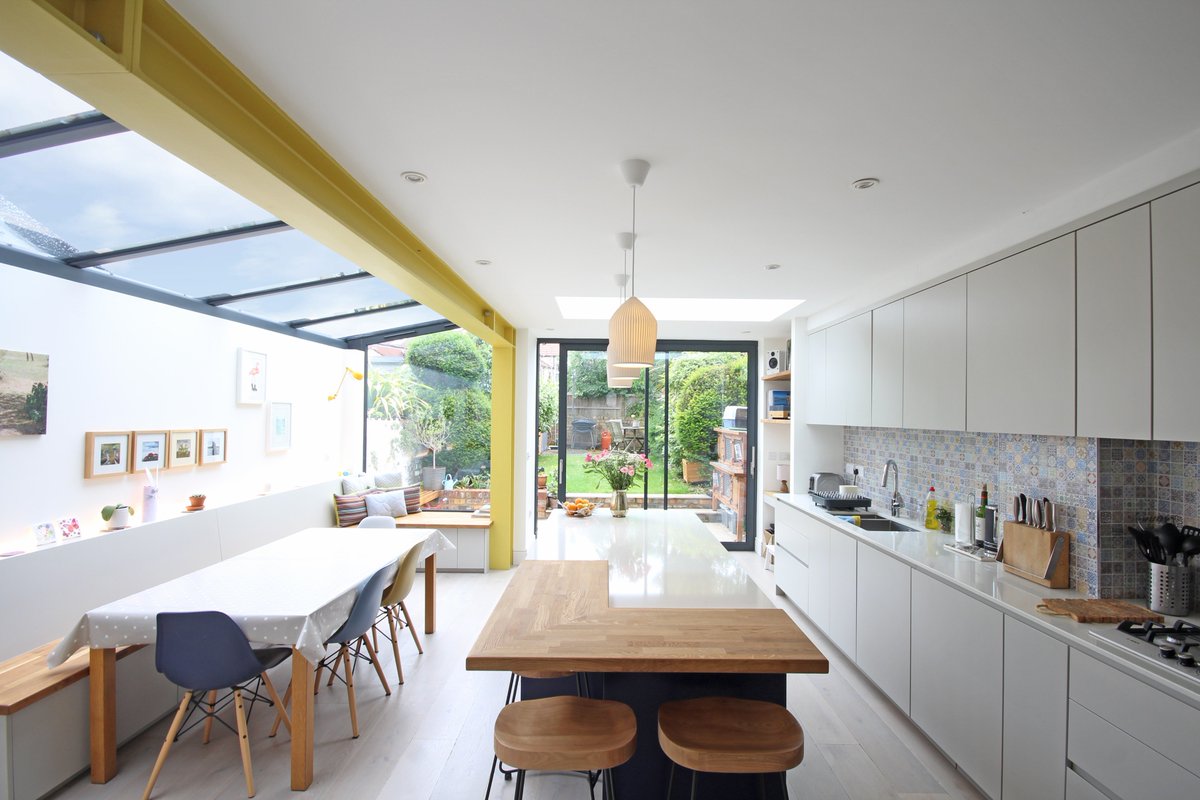
cooking area
can be made spacious or solid, strictly utilitarian or part of the general
hall for family meals, adding access to the terrace. This article has collected
useful tips for decorating the kitchen for different types of houses and styles, real
photos and design projects for inspiration.
Photo source: domsmam.com
12 tips for
arrangement of the kitchen in a country house
Tip 1. Choose the style of the kitchen interior in
in accordance with the style of the facade of the house and the features of the area.
Typically the style
the interior of the country-style kitchen house (and other premises) is formed based on
the taste of the inhabitants, as well as taking into account the style of the facade of the house itself.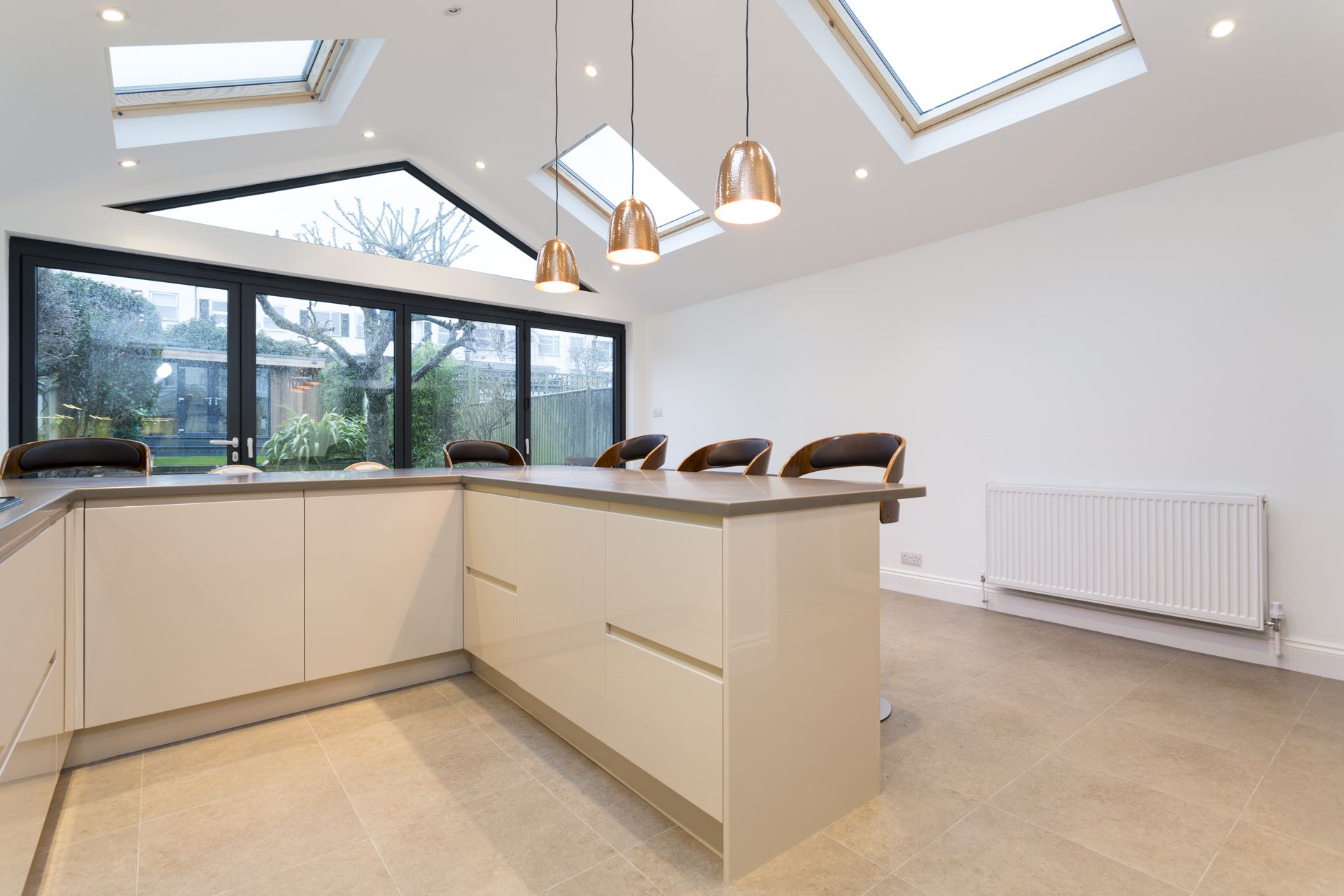
influence the features of the area where the house stands. Say its history or proximity to
river/sea. How beautiful it is when the interior, exterior and surroundings of the house are
natural extension of each other.
Here are some tips to help
decide:
In classic mansions and cottages lined with brick or
stone, classic interiors in the Empire style, eclecticism, a movie series,
art deco, french or english style and more democratic
American style corresponding.
Photo from the source: almode.ru
Photo source: mykitchendesign.ru
Photo from the source: 18onlygame.
In modern cottages
with panoramic glazing, the kitchen is most often decorated in the Scandinavian style, in
minimalism, hi-tech or eco style.
Photo from the source: mykaleidoscope.ru
Photo from source: mykaleidoscope.ru
Photo from source: mykaleidoscope.ru
Photo source: da.decorpremises.com
In wooden log houses
or rounded log kitchen in the style: country, Provence, shabby chic, rustic,
eco, Gustavian (Swedish Empire) and, of course, in the style of a Russian dacha, cottage
(under a log house) or noble property (see image below).
Photo from the source: queenphoto.ru
Photo from the source: almode.ru
Photo from the source: pro-dachnikov.com
Photo source: hameleone.ru
Photo from source: mykaleidoscope.ru
If the house is located
seas / rivers / lakes, you can choose the Mediterranean style, Provence style, marine
or beach style.
Photo source: goodlookslady.com
Photo source: josephbosco.com
Tip 2.

practical layout of the kitchen – U-shaped, the most versatile – L-shaped.
WITH
from the point of view of the “working triangle” the most successful layouts are:
“Island” – no matter how you
arranged furniture in the working area, “ island ” will make the kitchen as comfortable as possible,
especially if equipped with a stove and / or sink. But even the smallest
the island requires space, because there must be at least 1 meter of passage around it.
Photo from the source: almode.ru
U-shaped – when
furniture and workplaces are arranged in a U-shape, it turns out to cook while standing
almost in one place, making only turns with the body. True, width
premises for such an installation should be no more than 3.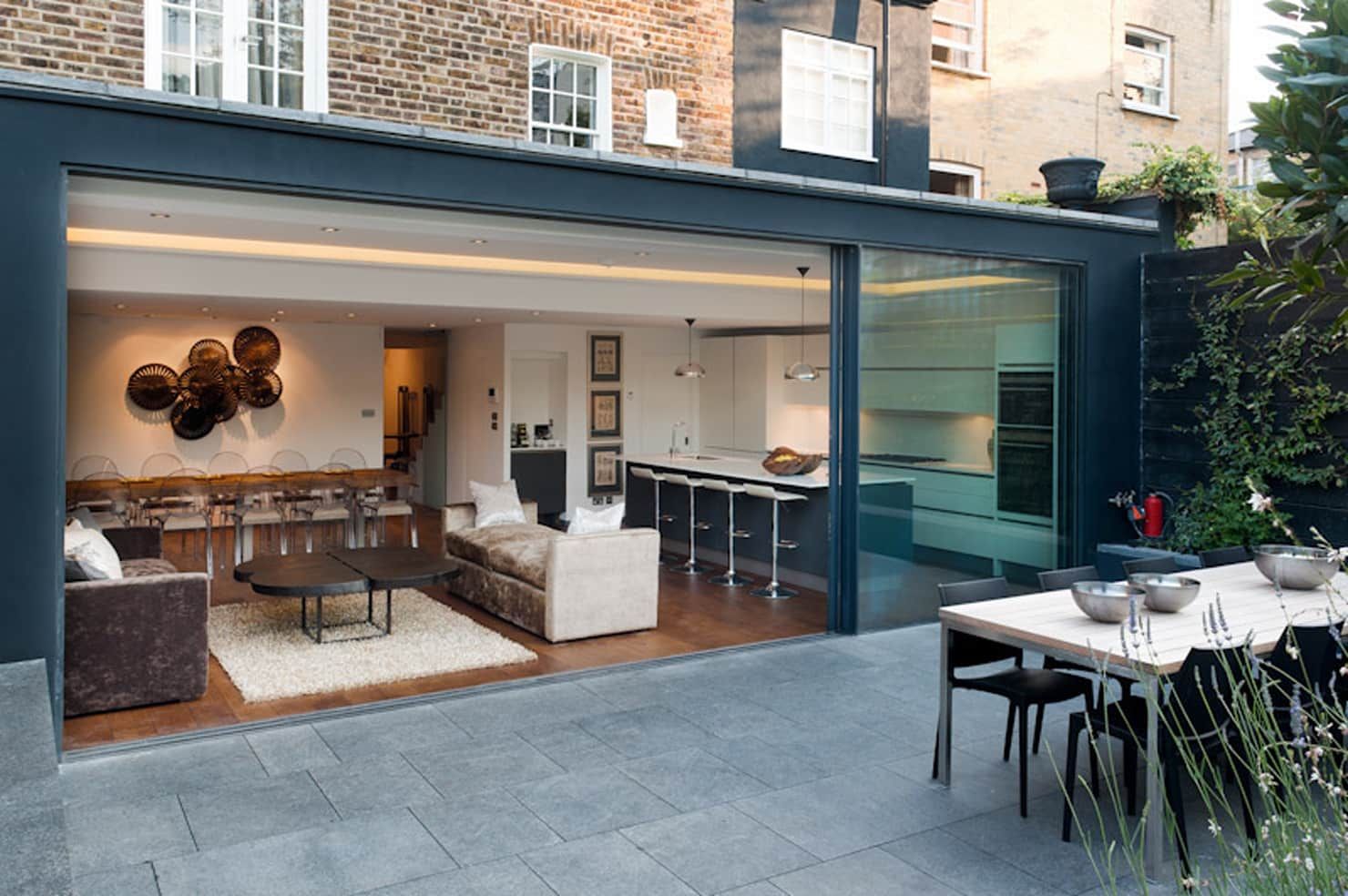
m, otherwise the distance between the side parts of the headset will be too large.
Photo from the source: info-kuhny.ru
The most versatile
the plans are:
Linear – universal,
but the most impractical option for planning a kitchen. Because the work areas
arranged in one row, while cooking, the cook has to
to walk extra meters back and forth, which means wasting time and effort. But for
small kitchens, this option is often the only possible
decision.
Photo from the source: galaktika21.ru
L-shaped – a little less
practical, but the most versatile furniture layout, which is especially true
for small rectangular kitchens.
it is desirable to put on the same line with the sink, and not the stove.
Photo source: hameleone.ru
For narrow and elongated
kitchens, a two-row (parallel) layout is suitable: Two-row – suitable for
kitchens with a width of no more than 3.2 m, and ideally no more than 2.4-2.5 m, and a refrigerator
along with the oven and microwave on the opposite side. sometimes between
two rows of furniture place a dining table, as shown in the photo below.
Photo from the source: portal-kolomna.ru
Tip 3. To the kitchen
was convenient, when planning, adhere to the rule of the “working triangle”.
According to this rule, three strategically important areas – sink, stove and
refrigerator – should be located next to each other and form
triangle.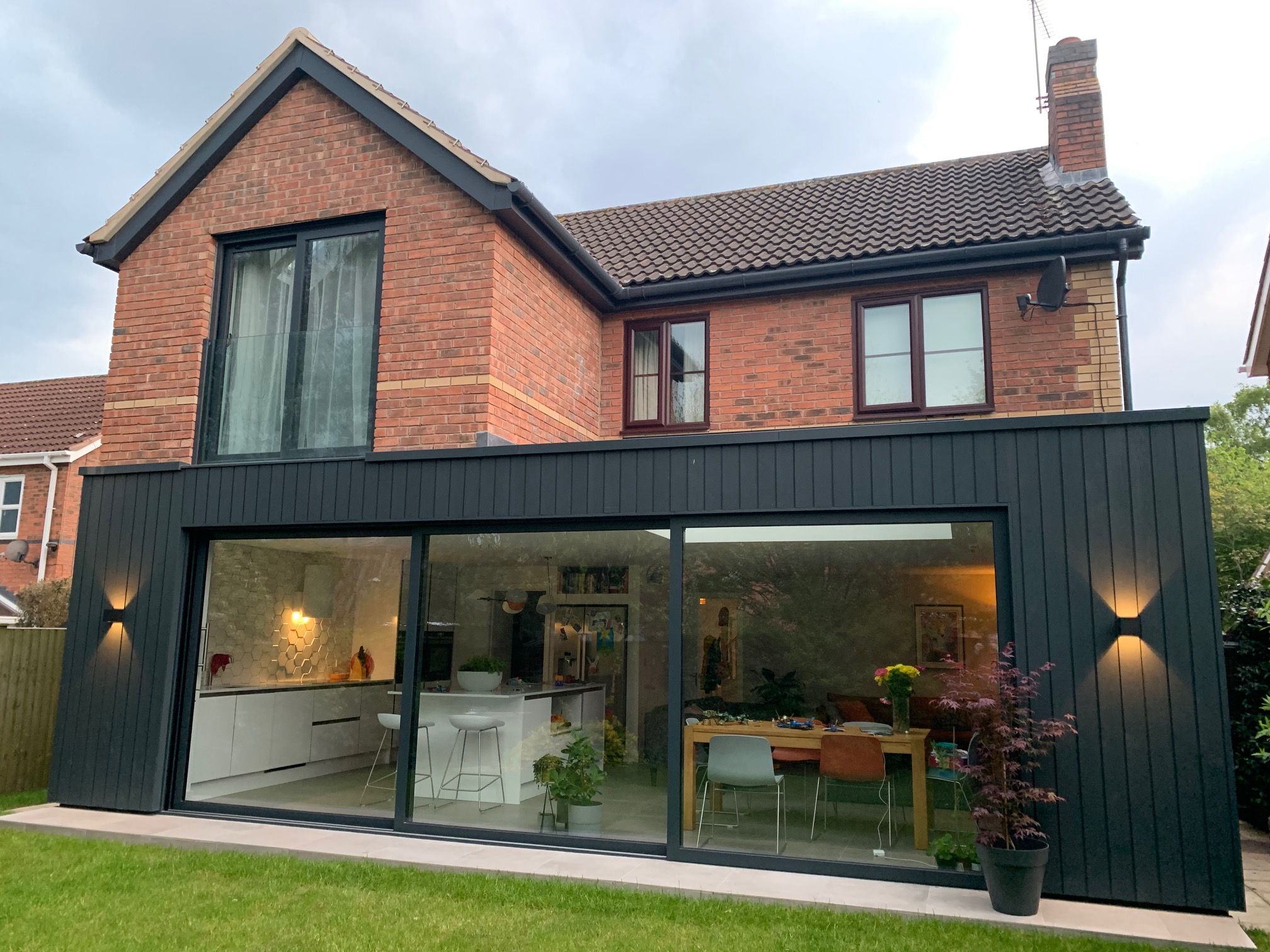
180 cm. It is good to place a cooking zone in this gap. Distance from
sinks to the refrigerator can be from 45 cm to 2 m. This gap accommodates
“unloading and loading area”, as well as auxiliary kitchen appliances such as
like coffee maker, kettle, toaster, etc.
Photo from the source: almode.ru
Tip 4. If your kitchen
has an area of more than 18 square meters, install a desktop island.
The island is
super functional table that can double as a cooking space
food, storage space for dishes and products, breakfast bar and
snacks. You can also build a stove, sink, wine cabinet,
dishwasher or small refrigerator.
Remember that for kitchens
up to 20 square meters, a small island measuring 120 × 100 cm is suitable.
the table can be mobile. The shape of the island must match the shape
rooms. In a kitchen of less than 18 square meters, instead of an island, you can
to install a peninsula, which is more compact due to the end, abutting against
wall or headset.
Photo source: akfengroup.ru
Tip 5. If your kitchen
located in the attic .. discard the upper cabinets in whole or in part, and
replace them with open shelves if the roof slopes are too low.
So you don’t
spoil the interior and use the walls under the slopes to your advantage. Wherein
lower cabinets should generally be equipped with drawers that
much more practical and roomy cabinets. In the next selection of photos
examples of how you can equip a kitchen in the attic are presented.
Photo from the source: onkuhnya.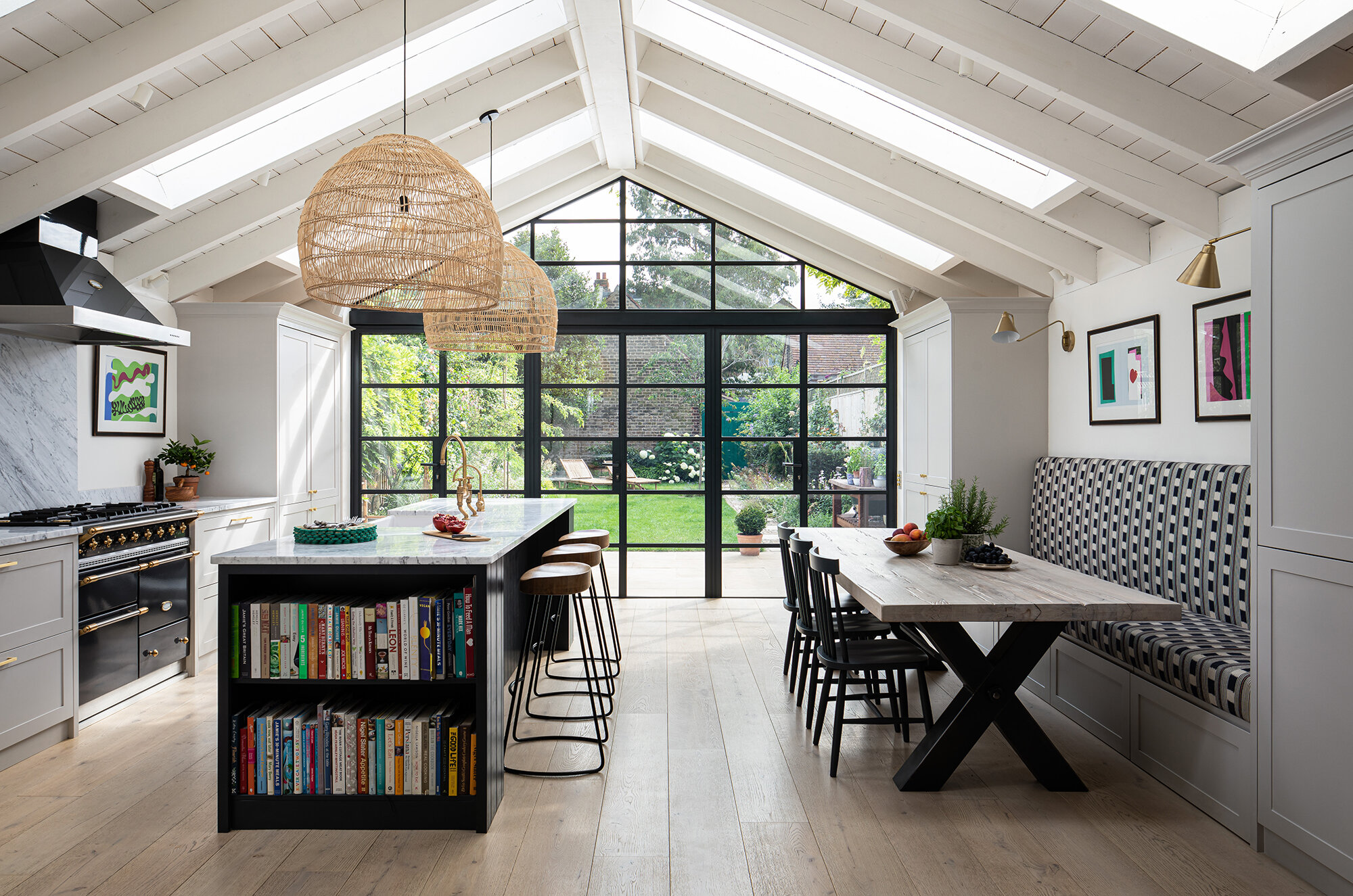
Tip 6. If there is
Possibility, install the sink near the window.
If you have an ability
install / move the sink to the window, then by all means use it. So
enjoy nature, the backyard lawn, or at least the view of the sky above
cottage village can be every day, doing everyday things. However
a significant expansion of communication is not always desirable.
Photo from the source: coposic.ru
Tip 7. If the kitchen
combined with a living room or dining room, zone the space.
Space zoning
gives the interior a sense of order and comfort. Here are some tricks, especially
relevant for the kitchen in a country house:
– Finishing the floor in the kitchen and
floors in the living / dining room with different materials.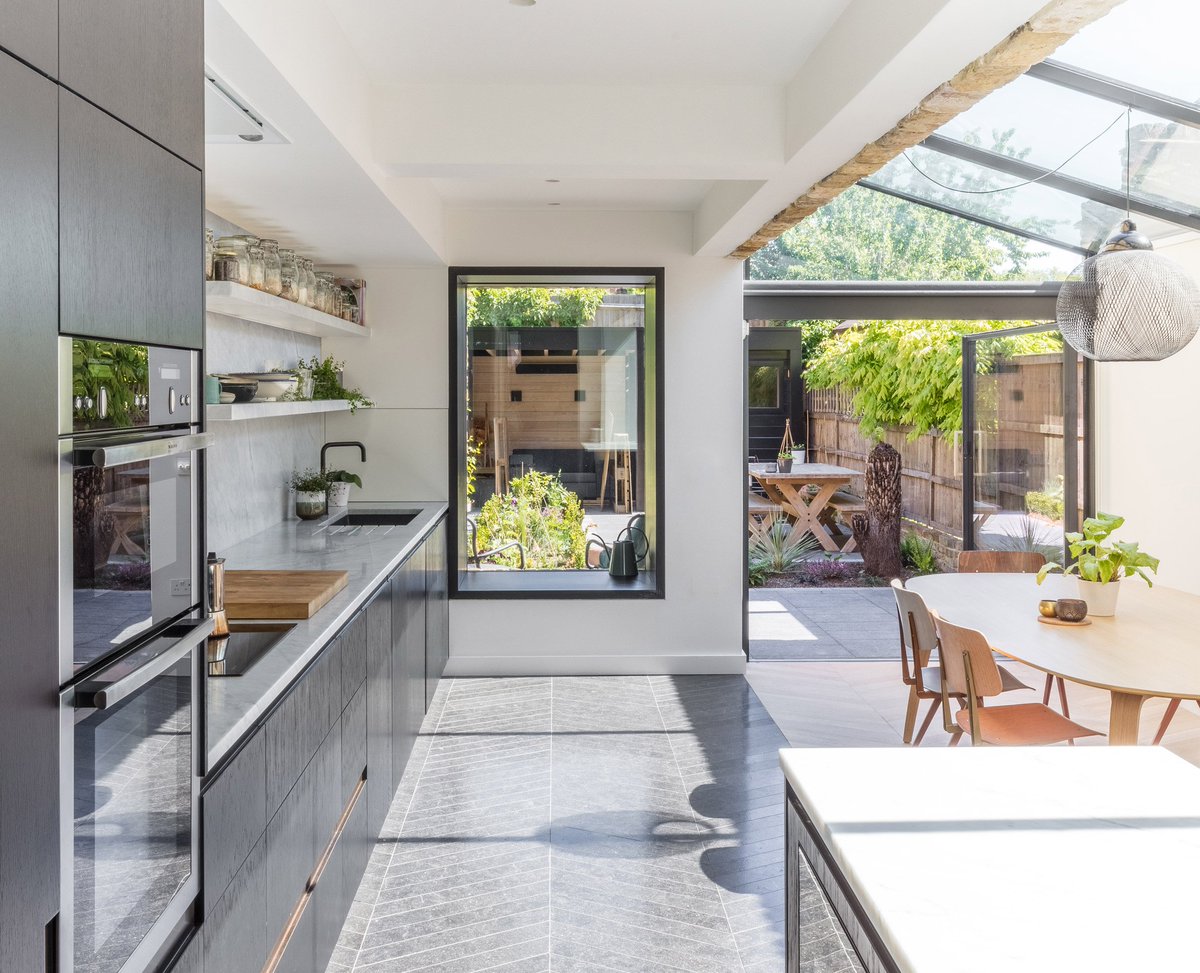
wooden rooms, in the kitchen it can be laid out with more practical tiles,
porcelain tile or stone.
Photo source: happymodern.ru
Photo source: sk.buildingcounsels.com
– Partial concealment of the kitchen. So that the mess in the kitchen or dining room does not spoil the look of the living room, you can
install sliding doors, curtains, panel curtains, screens, low or
narrow barriers.
Create an arch or
partitions with a wide opening, a sliding glass partition or
columns.
Photo from the source: stroitelstvo-gid.ru
Photo source: na-dache.
– Placement of furniture
zone boundaries. As borders you can use: bar counter, dining
table, island table or peninsula, sofa, armchairs, consoles and shelves.
Photo from source: mykaleidoscope.ru
– Lighting zoning.
In the kitchen, it is enough to install a bright overhead light and furniture lighting,
fixtures should be concise. But in the living room the light should be on
several levels and softer when the main ceiling lighting is complemented
floor lamps, sconces and table lamps. At the same time, the lamps themselves can be
elegant. It is desirable to highlight the dining area with suspensions or a chandelier,
mounted directly above the table, as shown in the following photos.
Photo from the source: myinteriordesign.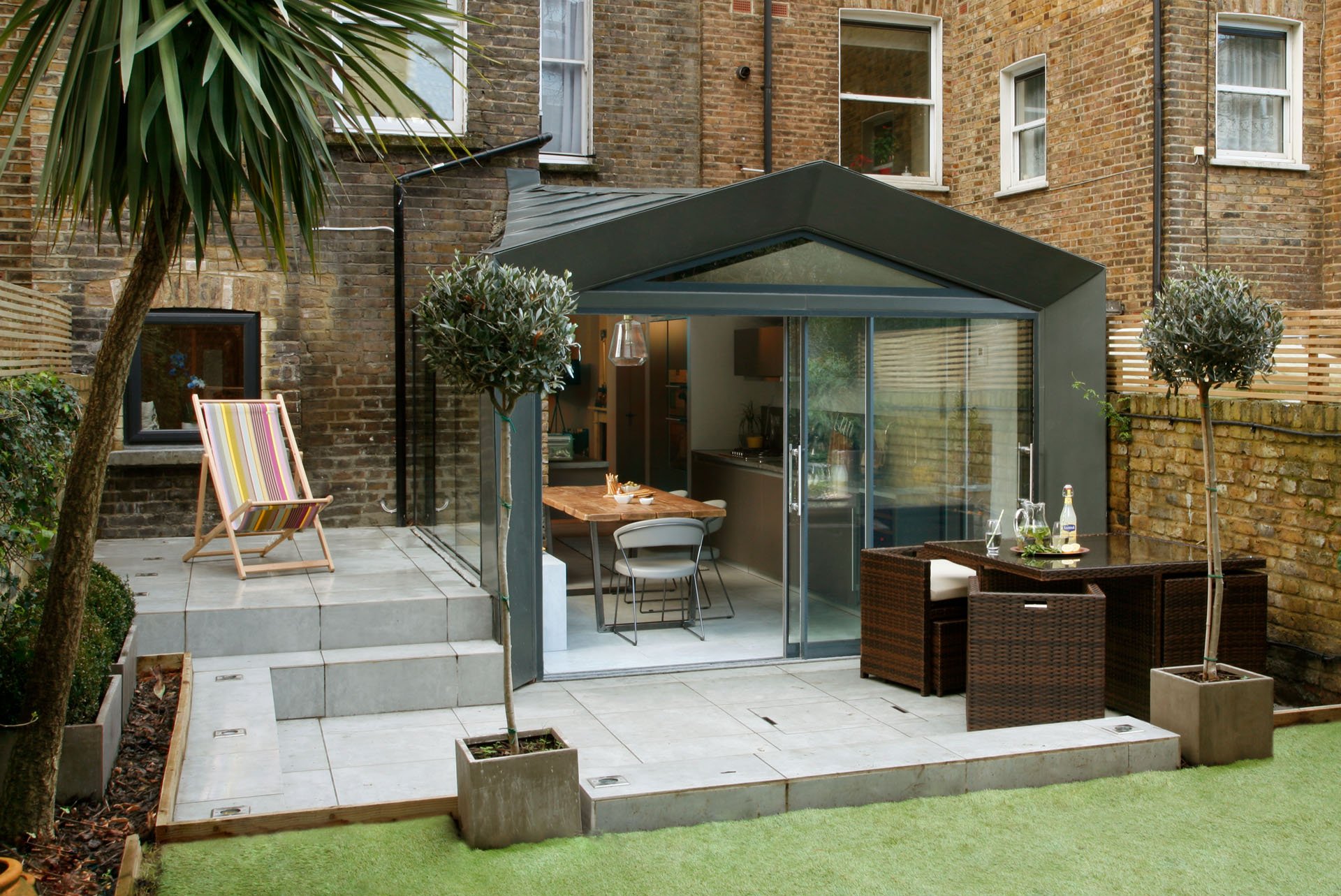
The use of carpets.
A large carpet on the floor in the living/dining room will divide the room and create coziness. Also
you can lay a carpet between the zones. For example, between the working and dining area.
Photo from source: mykaleidoscope.ru
Tip 8. If the kitchen
checkpoint, workplaces must be arranged so that the passage always remains
free.
If the kitchen is solid,
for example, combined with the hallway, has access to the terrace or backyard, working
zone (the same “triangle” of the stove, sink and refrigerator) must be
plan so that it does not cross the aisle. Then the fuss of the household is not
will interfere with a person engaged in cooking or cleaning. remember, that
the width of the passage should be at least 1 m, and preferably 120 cm or more.
walk-through kitchen is great to use as a room divider bar
rack, island or peninsula.
Tip 9. Floors,
worktops, backsplashes and furniture fronts in black and dark brown
impractical.
On dark surfaces, even the smallest crumbs, drops of water and
dust. Therefore, the most contaminated places in the kitchen are the apron, countertop, and especially
floor – it is better to arrange in light shades.
Photo source: hameleone.ru
Tip 10. For
the combined space requires a powerful hood.
To protect curtains, upholstery
furniture, pillows and carpets in the living room from culinary smells should be installed
dome-type hood with a capacity of at least 1000 m3 / h.
Photo source: fkarchitects.net
Tip 11. Use in decoration and furnishing
predominantly natural materials.
Subordinating the interior of the house to the idea of proximity to
nature, you can fully experience the charm of life outside the city. In finishing
kitchens of a private house try to avoid using vinyl wallpaper,
plastic panels, double-glazed windows, laminate and non-natural linoleum.
The ideal furniture for the kitchen of a country house is wooden (including plywood).
and veneer), forged and wicker. Textiles are also better to choose natural or
mixed. But in some cases, the use of artificial materials
justified. For example, an artificial agglomerate countertop is much more practical.
and more durable than natural stone countertops, and nylon carpet is almost
not inferior to wool and does not cause allergies.
Tip 12. In design
kitchens of a country house try something that you would not dare to in a city
apartment.
It may be a different interior style, bold colors, non-standard
layout, decorating techniques, or things you like but don’t fit into
the interior of your “urban” kitchens.
Photo source: hameleone.ru
Style and color scheme
private house kitchens
And again, it all depends
from a custom kitchen design. But there are general rules. They are simple:
1. Smaller rooms are better
just withstand in the style of minimalism or bright classics in bright colors.
Just use different shades and place bright accents. Otherwise
case, the interior will be dull and gloomy.
2. If space permits,
feel free to choose dark colors in the kitchen against the background of light plain walls or
light accent kitchen against the background of dark, rich tones in the interior.
3. Design style
limited by your imagination. Make your wildest dreams come true. classic co
many elegant details or strict and bold high-tech, or maybe gentle
rustic and cozy Provence?
4. Complete your look
kitchens with beautiful interior textiles, and the room will immediately sparkle in a new way.
5. For lovers
minimalist styles such as Scandinavian, English classics, loft,
eco style.
Italian classics using patination (artificial
aging with gilding or silver).
ideas, layouts, design tips – Roomble.com
layout
2022-05-31T07:40:00+00:00
2022-06-01T17:27:37+00:00
How to plan a narrow kitchen: ideas, layouts, design tips
2022-05-31T07:40:00+00:00
What layout to choose so that the narrow kitchen is not only beautiful, but also comfortable? What should be taken into account when choosing furniture and what colors would be most appropriate here? What do designers recommend? The answers to all these questions are in our article!
How to plan a narrow kitchen: ideas, layouts, design tips
What layout should I choose to make a narrow kitchen not only beautiful, but also comfortable? What should be taken into account when choosing furniture and what colors would be most appropriate here? What do designers recommend? The answers to all these questions are in our article!
There are suspicions that some architects, when planning apartment buildings, do not think about the practical component at all, but are guided by the principle “it will do”.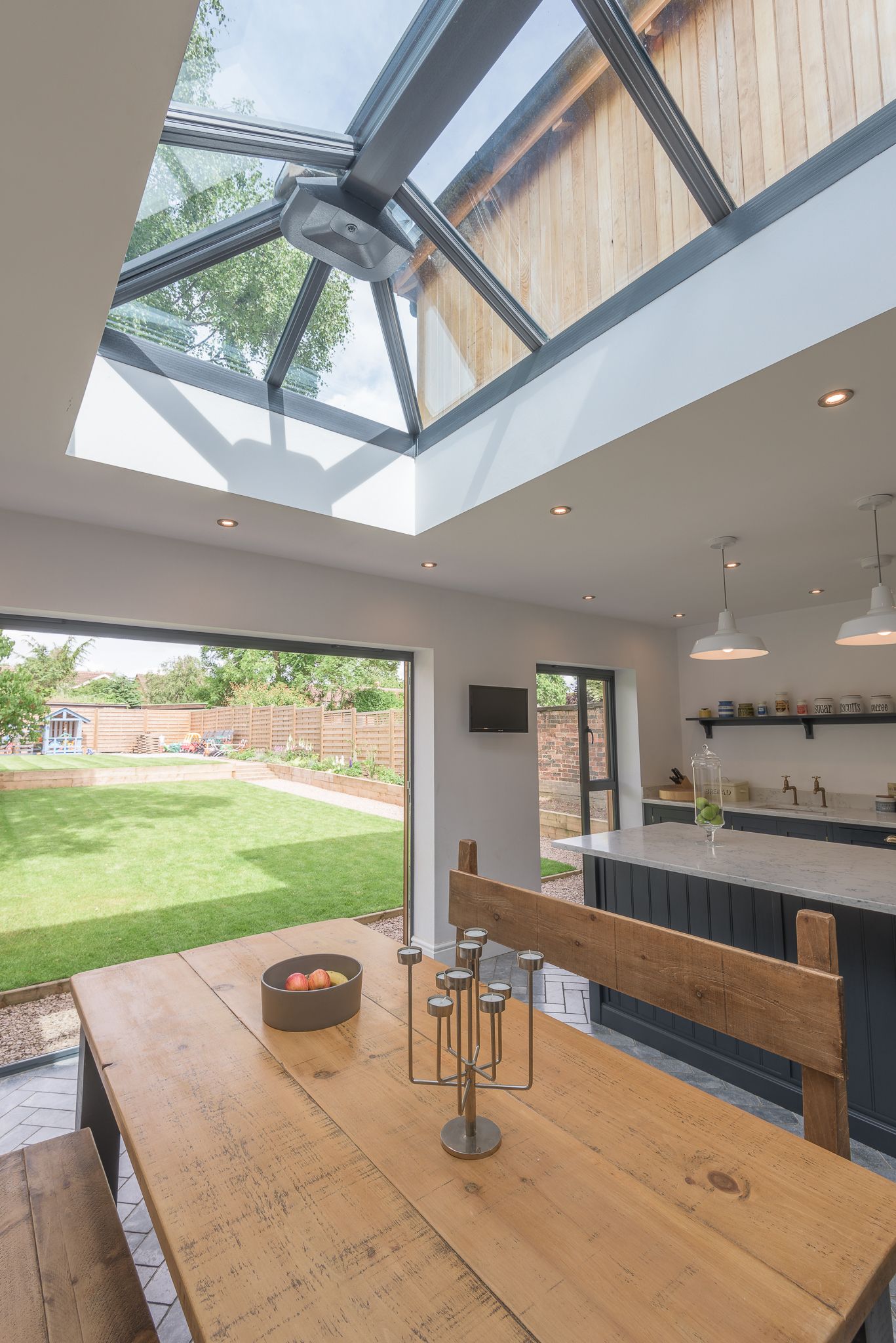
What kitchen appliances designers choose: tips and brands
How to combine kitchen and living room
A lot depends on the rationality of organizing the layout of kitchen furniture, which means that it is necessary to thoroughly approach this issue and carefully consider all options, choosing the best one. Consider the most popular schemes for arranging kitchen furniture.
1) The standard linear layout assumes that the suite is located along one wall, with the stove on one side of the sink and the refrigerator on the other.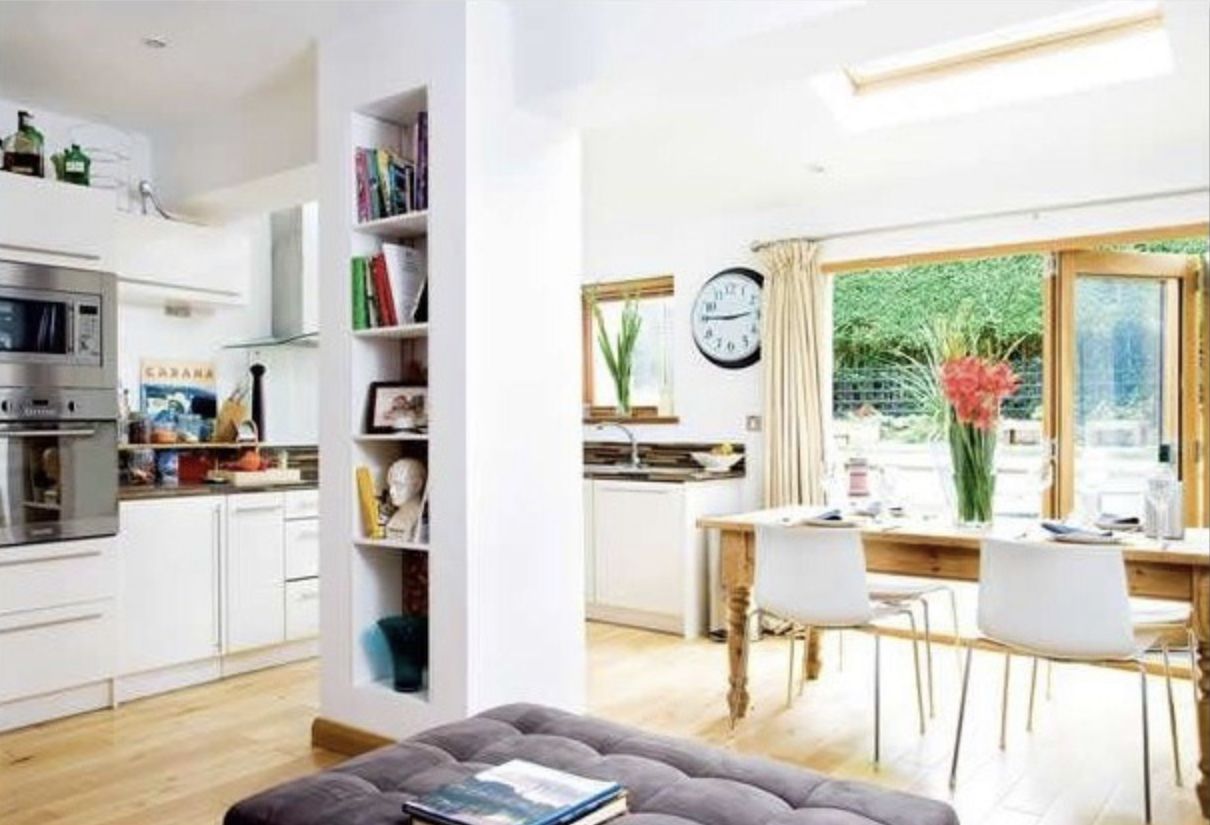
2) Corner layout , or, as it is also called, L-shaped, implies the placement of furniture against adjacent walls, which allows you to expand the working surface in comparison with the previous version. In such a case, you can also use the window sill, of course, if the room has a window. The window sill can be used as a bar counter or an additional place for cooking.
Yulia Alekseeva, designer, decorator, head of the JulyAlex Interior Design & Decoration studio:
— Installation of a corner kitchen will make the room more square. If there is a window in the end wall, you need to think about moving the battery in advance, and then it will be possible to place here not only open shelves under the tabletop. A working area with a sink looks good by the window, and by installing a dishwasher or washing machine in this place, you will thereby increase the area of \u200b\u200bthe working surface.
facebook.com/JulyAlexInteriors
3) Two-row layout , oddly enough, also has the right to exist in narrow kitchens, but only on condition that at least one meter remains between the rows. But, as you yourself understand, for too narrow spaces, this way of arranging furniture is unacceptable. If the width allows, you can stay on this layout, while the dining table is best placed by the window.
4) U-shaped layout – is a desirable but not always feasible option. In this case, as in the previous one, it is necessary that there be at least a meter of free space between parallel rows of furniture. And for a large amount of additional usable space, most likely, you will have to abandon the dining area in the kitchen and move it to another room.
Elena Koroleva, designer and founder of Leo Company:
— Competent layout in the case of a narrow kitchen should be very compact and ergonomic.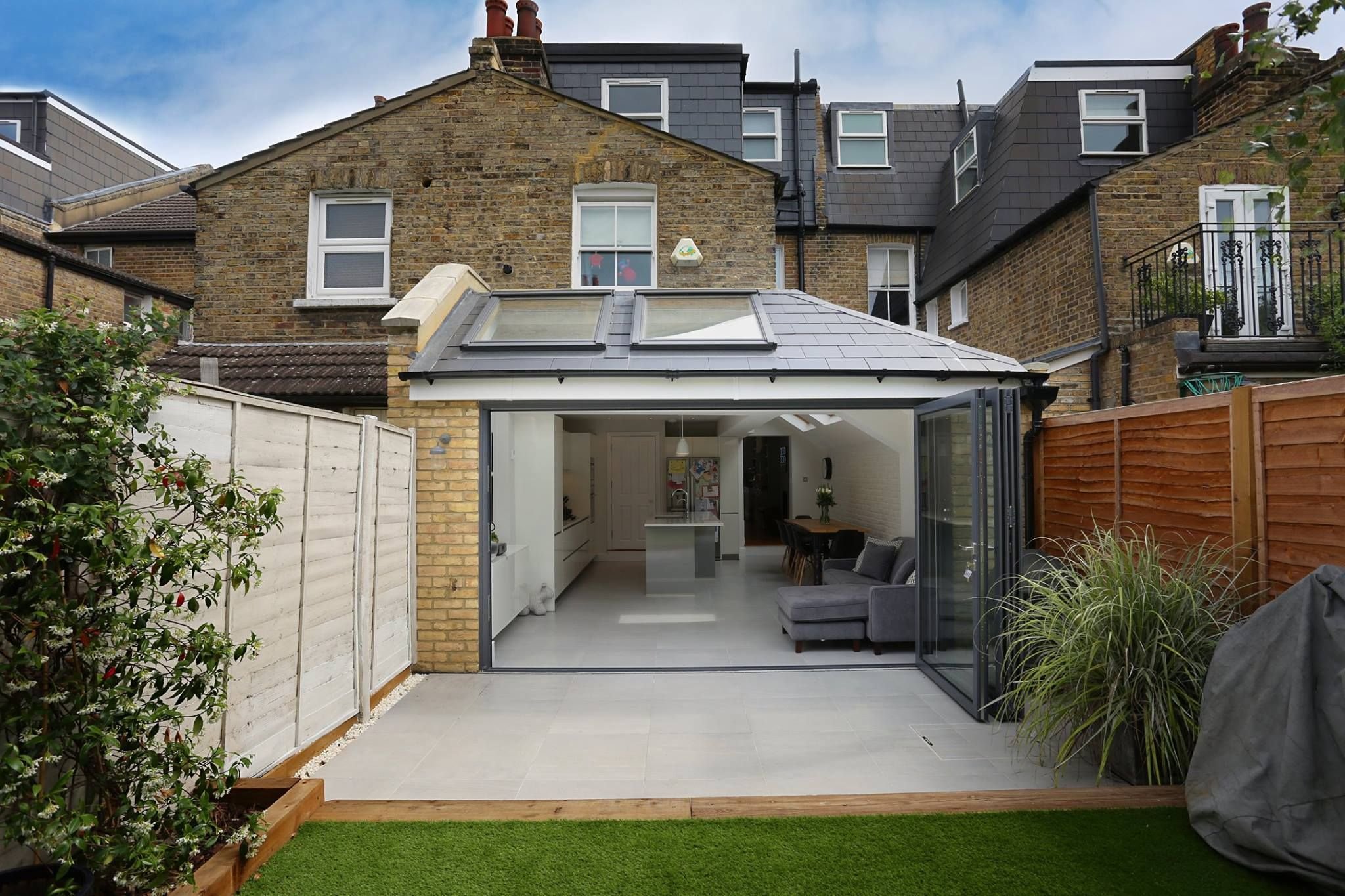
leo-gk.com
Of course, in small and especially narrow rooms, the best solution would be white with a reasonable addition of accent tones, such as blue or light green. But the use of bright and warm colors will lead to a clear designation of boundaries and, as a result, space constraints. At the same time, you can’t do the whole kitchen only in white shades, a strong blurring of the boundaries can lead to disorientation.
If you cannot refuse rich dark shades and consider it your duty to find a use for them in your kitchen, then by no means use them in the upper part of the room. Dark floors and countertop heights are acceptable, but anything above and at eye level should be done in cool, light colors. Otherwise, you run the risk of visually restricting the available space, which is completely unacceptable in our situation.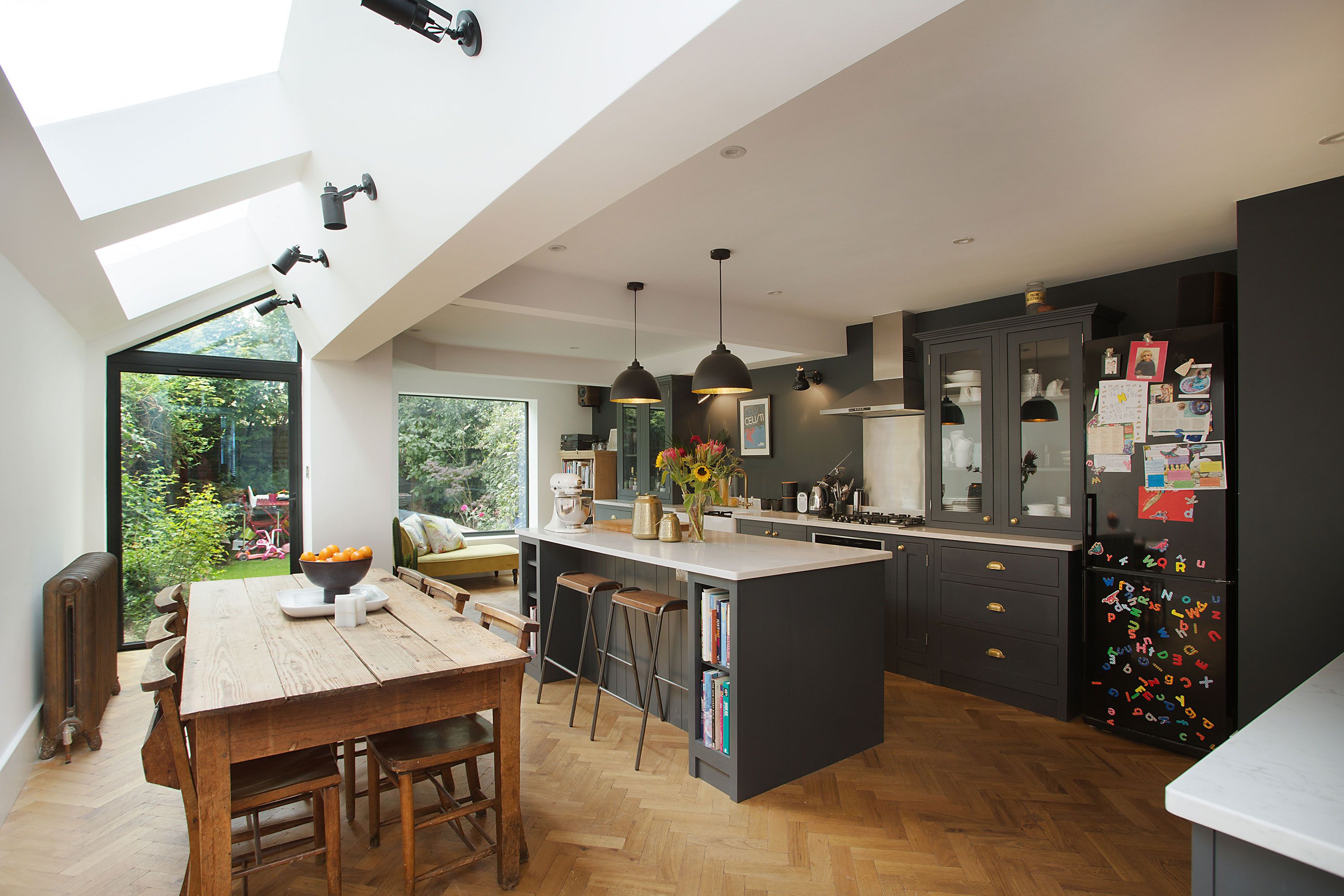
Yulia Alekseeva, designer, decorator, head of the JulyAlex Interior Design & Decoration studio:
— In order to bring the kitchen closer to the shape of a square, you can use a simple design technique — decorate the longitudinal and transverse walls in different colors. Try to highlight the narrow end surfaces with a darker color or imitation of brickwork (if this matches the general style of the apartment).
facebook.com/JulyAlexInteriors
Elena Koroleva, designer and founder of Leo Company:
– Visual expansion of a narrow kitchen will help to achieve the right choice of color for furniture, walls, ceiling and even an apron. Preference should be given to light shades. If you still want to add colors, then the emphasis can be placed on the lower pieces of furniture or separately on the apron, this will not create a cluttered effect.
leo-gk.com
If your kitchen has a window or even windows – that’s just great! In no case do not block them with thick curtains and do not clutter up with tall flowers and other objects.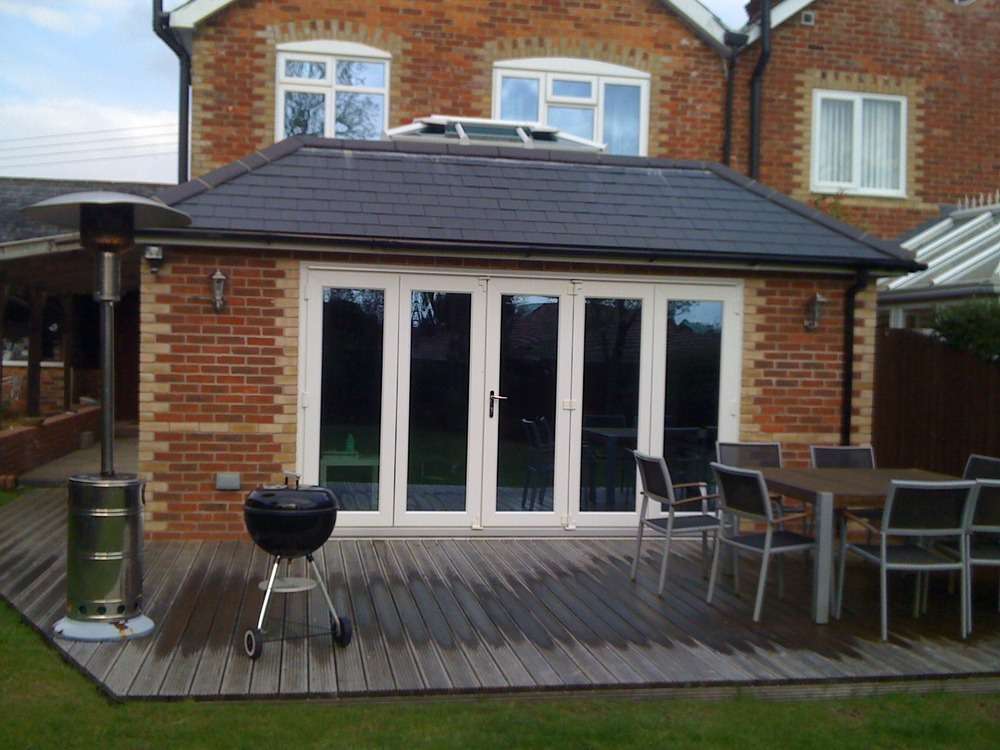
At the same time, don’t forget about artificial lighting, because even in the daytime you sometimes have to turn on the lights. Lighting the work surface is one of the most important nuances of organizing lighting, so it would be ideal to build small lamps directly into hanging cabinets around their entire perimeter.
And one more thing: if your kitchen is narrow, but has high ceilings, in no case mount the chandelier close to the ceiling – this will create the feeling that you are in some kind of basement, where you can see the light at the end of the tunnel. Lower the lamp as low as possible, the main thing is that the head does not cling.
Choosing a kitchen set for a long, narrow kitchen is not an easy task, especially when you have to choose from standard options. Therefore, it makes sense to make furniture to order. And let it come out more expensive, but you will be able to take into account the features of your particular layout, which will allow you to make the most of every corner of the space.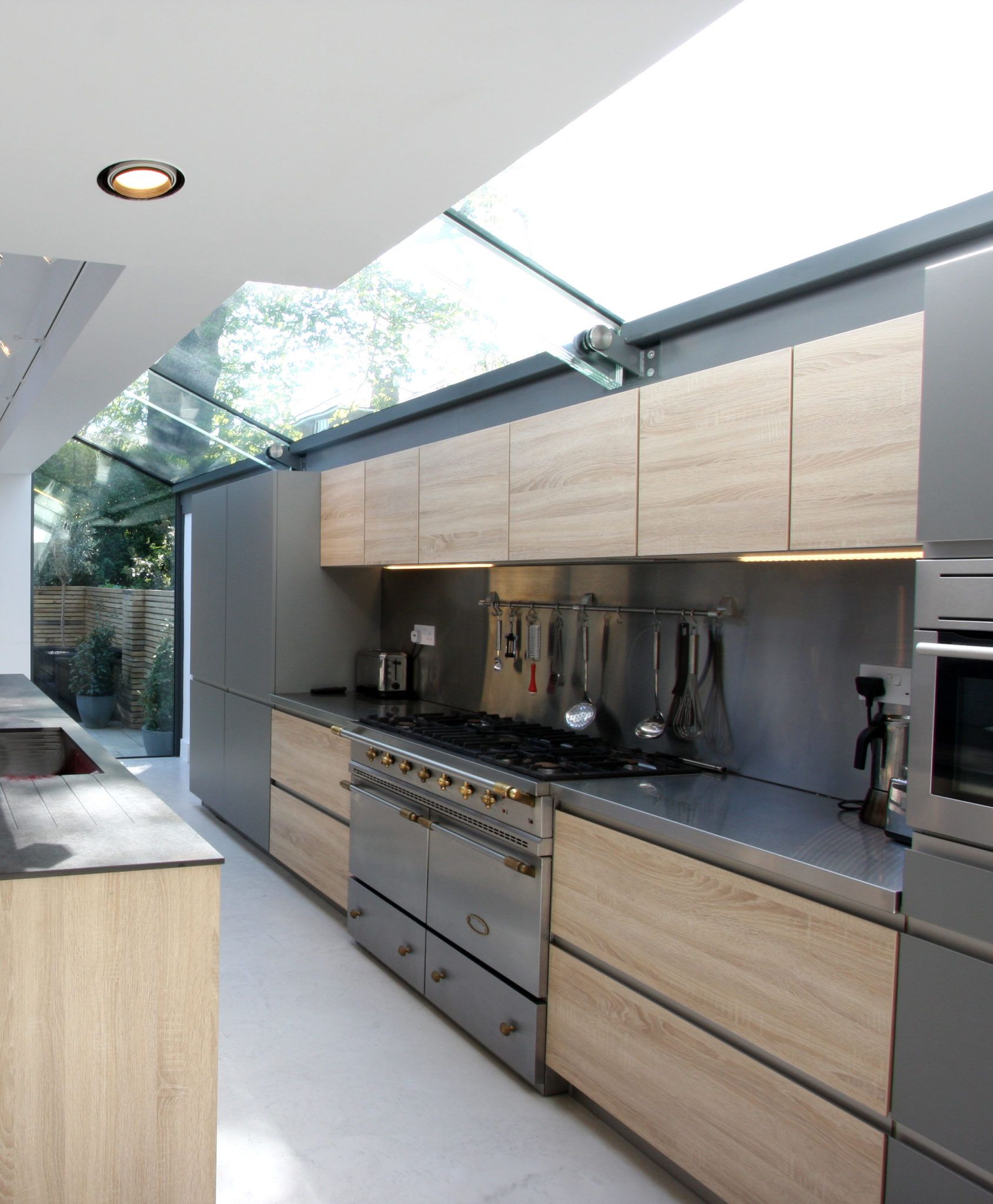
So, when choosing a kitchen to order, you should take into account several points. The top drawers should be light in color, although translucent or transparent doors can be used, which is even better. Feel free to build in folding tables and bar counters, as these are multifunctional solutions that expand the work surface. Moreover, such elements can be ordered from glass, which will visually expand a small kitchen.
Elena Koroleva, designer and founder of Leo Company:
— As for furniture, kitchen doors that open upwards, as well as wardrobes that will not interfere with movement, will be the salvation. Undoubtedly, it is worth using the work area along the window, where you can place a sink, dishwasher or washing machine with an additional work surface. Instead of traditional dining tables, it is better to use a transforming table, a retractable table top or a bar counter. As an alternative to a rack-shelf, you can hang a folding table that will not interfere with the hostess when cooking.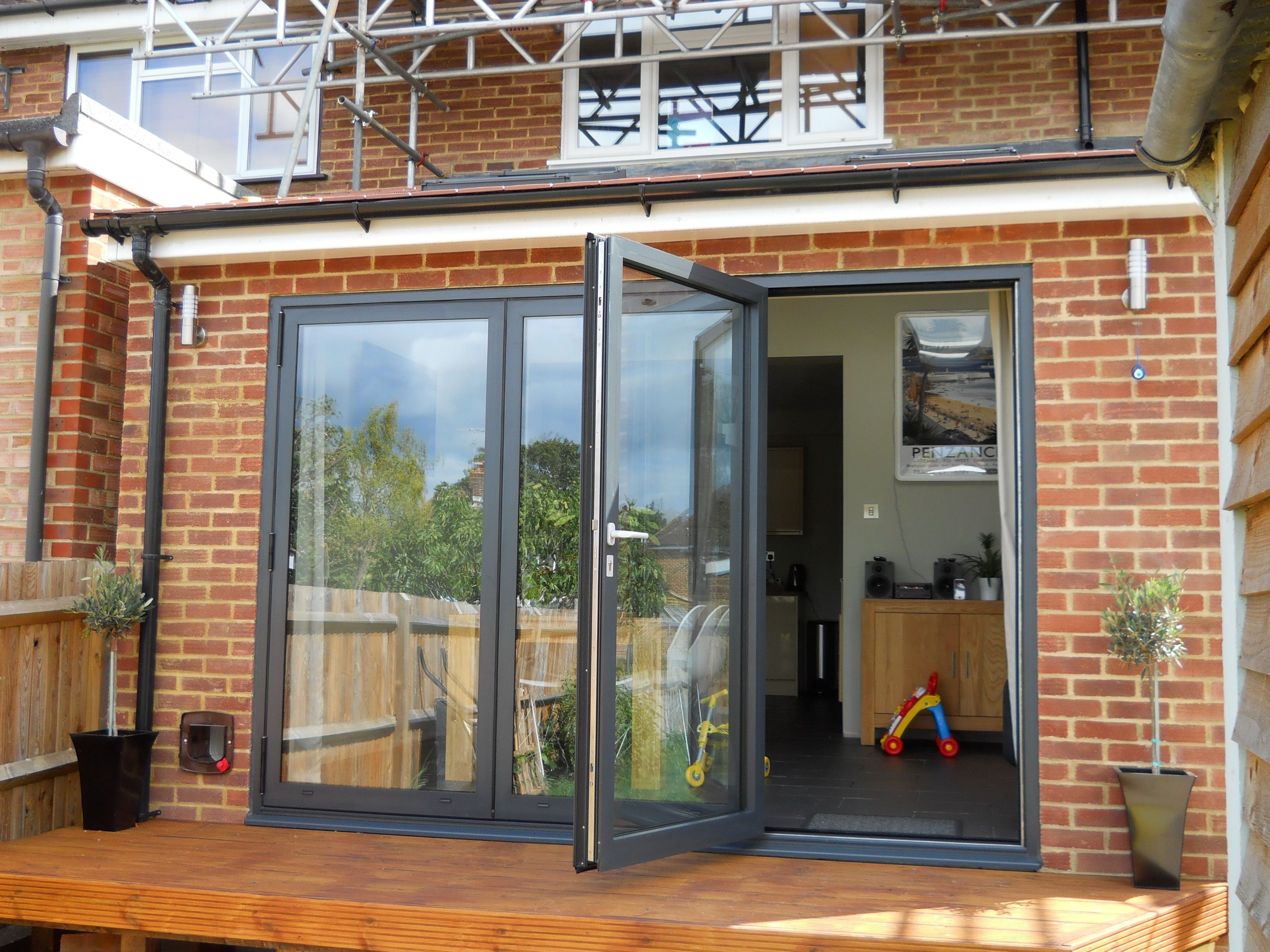
leo-gk.com
Julia Alekseeva, designer, decorator, head of JulyAlex Interior Design & Decoration:
— When choosing furniture for a narrow kitchen, give preference to those models that can add a sense of spaciousness to the room. Laconic design, minimal decor, simple shapes, glossy reflective surfaces – all this will help you cope with the task.
It is preferable to use pastel colors of cold shades (beige, olive, barely perceptible gray, pale blue), creating a feeling of lightness and weightlessness. However, a small splash of warm tones (a natural wood-colored countertop) will be very appropriate here and will make the space more comfortable. Sometimes the contrast game works great when the facades of the upper modules are made light, and more saturated colors are selected for the lower cabinets.
facebook.com/JulyAlexInteriors
If you want to make a small narrow kitchen more spacious and airy, then you should consider replacing a row of upper cabinets with open shelves and shelving.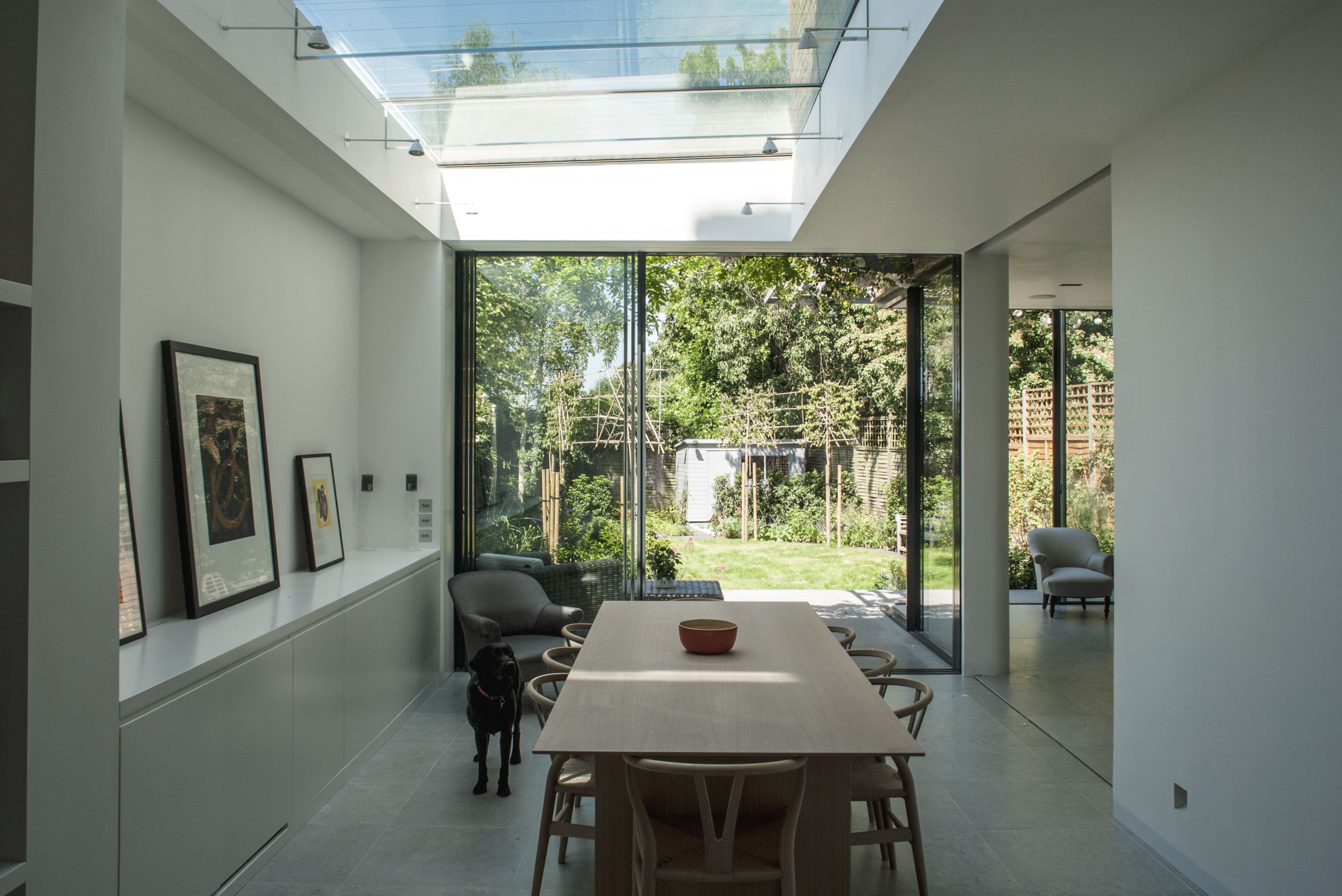
This step will give your kitchen visual lightness and quick access to items without having to open and close the doors every time. In addition, the background of the shelves can be decorated in some interesting bright way.
- Flooring (tile, parquet or laminate) is best laid out diagonally, so you create a sense of extra space. Another option is to place it parallel to a narrow wall.
- In order to “lower” the high ceiling in a narrow kitchen a little, choose for it not a white paint color, but a soft beige or light gray.
- Quite an important point – the presence of natural light. The more it is, the more spacious and airy your kitchen will look, so give up thick curtains in favor of light translucent curtains, blinds or Roman blinds.
- Transparent furniture is perfect for a narrow kitchen. Plastic chairs or a glass table will dissolve into space and be completely invisible – this, in turn, will help visually expand the room.

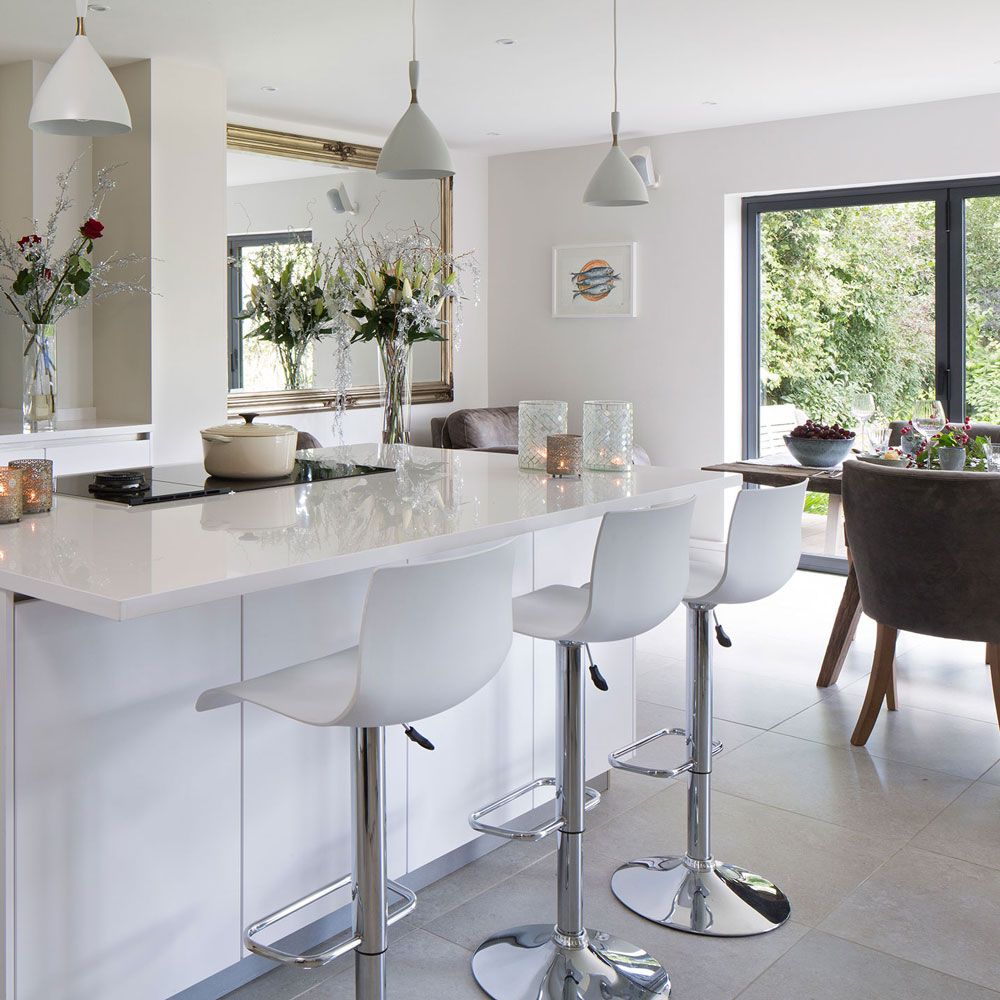 Using the same tiles inside the kitchen and outside on your patio is an excellent way to create a flush, seamless look.
Using the same tiles inside the kitchen and outside on your patio is an excellent way to create a flush, seamless look. Surfaces need to be functional and non-staining, but mixing in some other materials can soften the overall look and help divide the room up into relaxation and cooking areas.
Surfaces need to be functional and non-staining, but mixing in some other materials can soften the overall look and help divide the room up into relaxation and cooking areas.